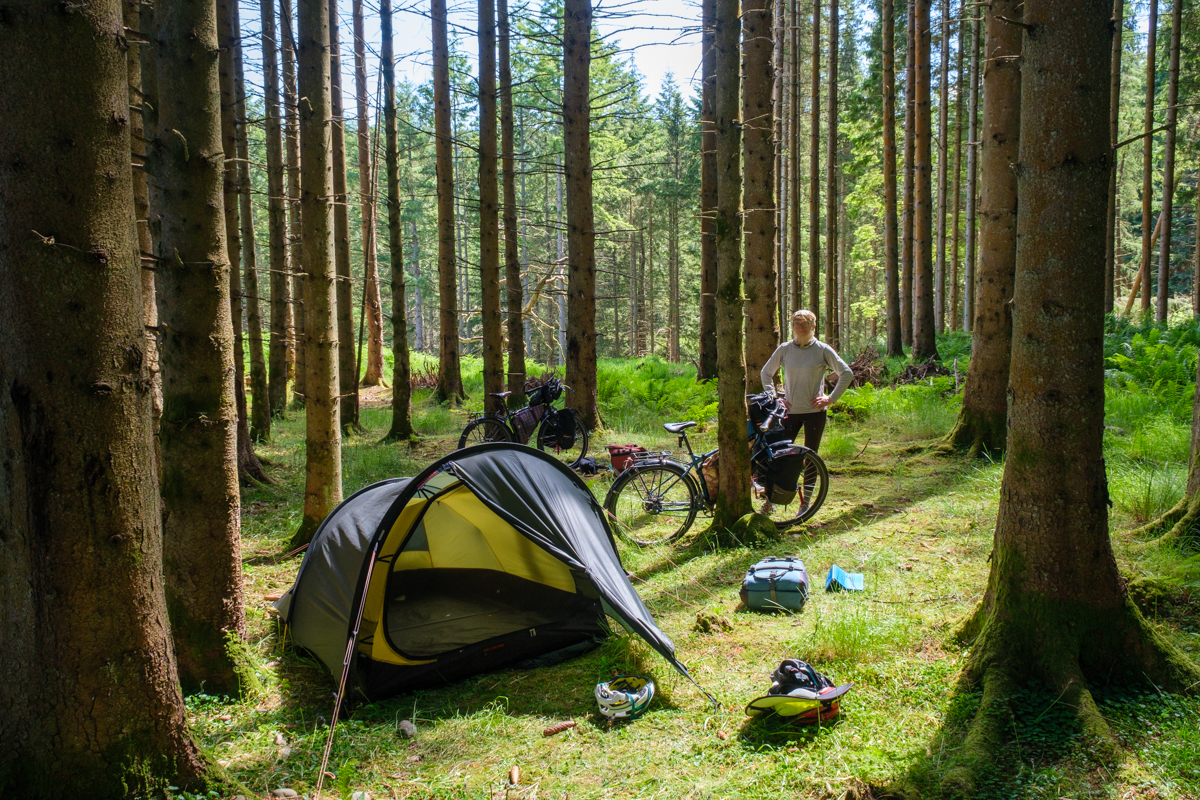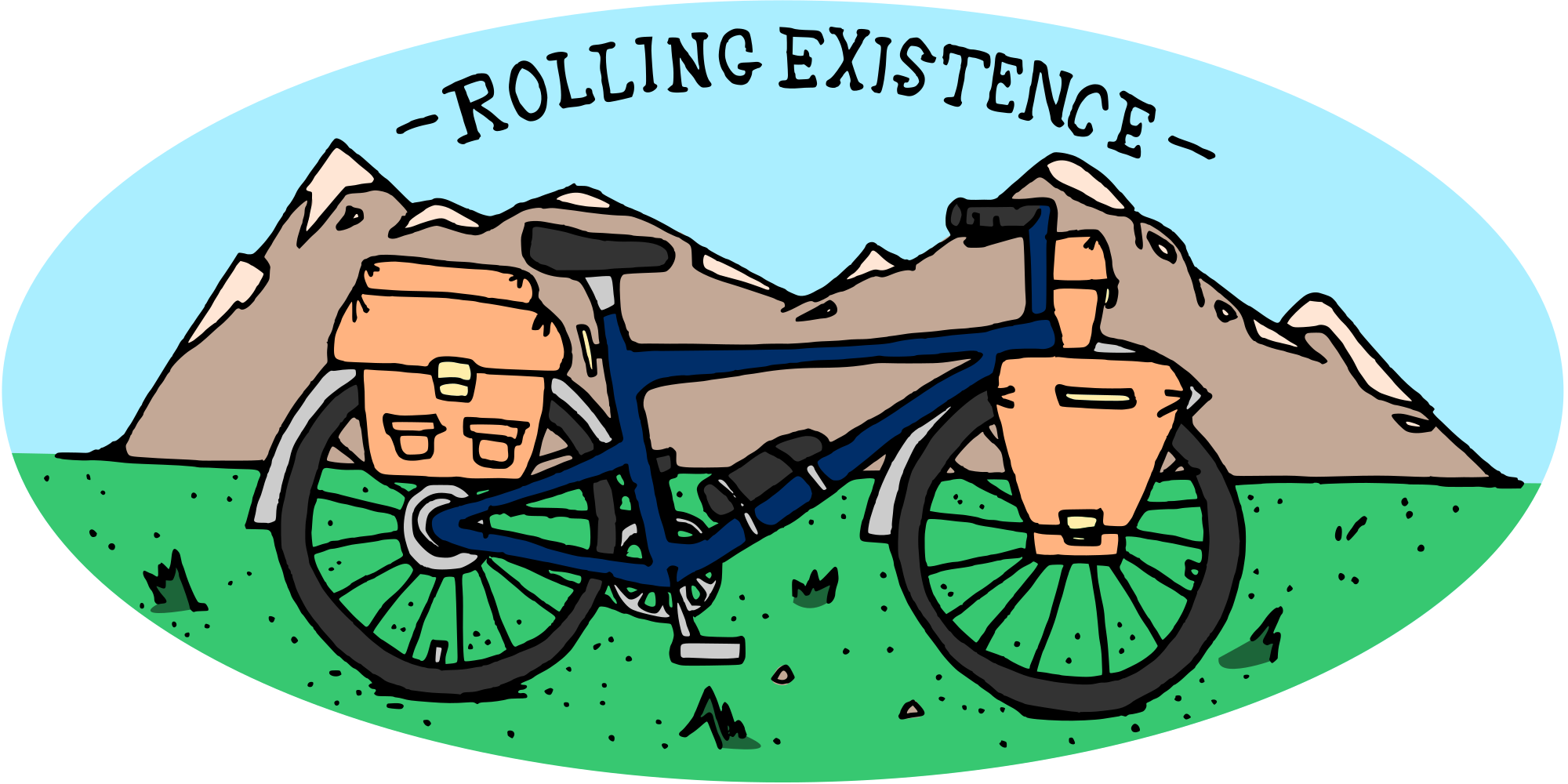Bicycle Touring Scotland
We needed to remain outside the Schengen Zone for at least 3 months to reset our visa, so we had plenty of time to take a meandering route around Scotland. We rode sections of several different cycling routes in eastern Scotland and spent some time hiking in Loch Lomond and Cairngorms National Parks. After cycling the Outer Hebrides, we rode part of the North Coast 500 route before heading south to England and Hadrian’s Wall. While the weather made bicycle touring Scotland pretty challenging, the scenery of the highlands and the Scottish Isles was well worth the effort.
Route
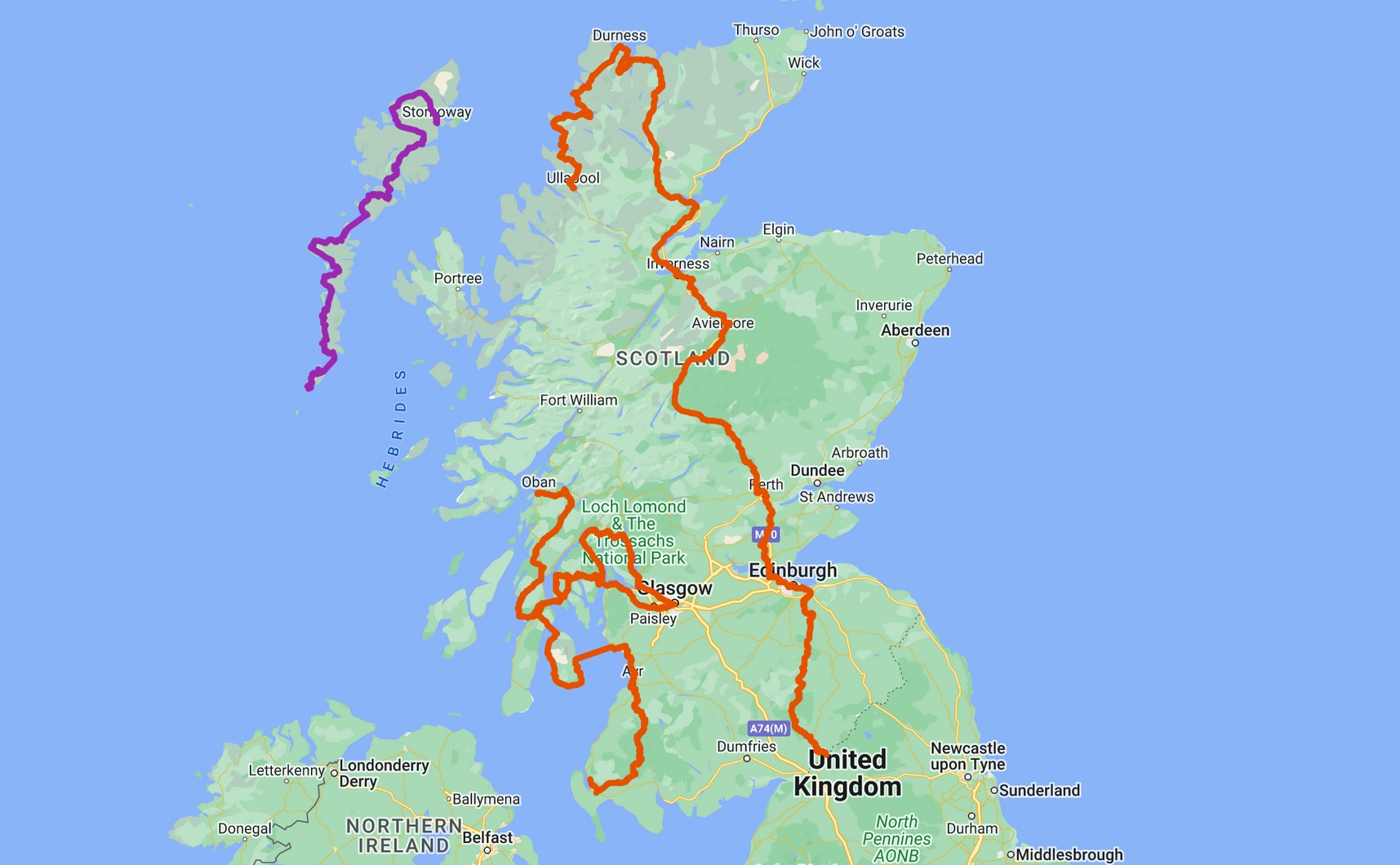
Download the GPX track for our route from Ullapool to England. NOTE: This is not a polished route and is intended for research and planning purposes only.
Southwestern Scotland and Loch Lomond National Park
We arrived in Scotland by way of the Larne-Cairnryan ferry. Immediately upon leaving the highway we rode some nice gravel roads where the rhododendrons were in full bloom. Neither of us had seen rhododendrons this huge so we stopped for long time to admire them.
We had been looking forward to the “right to roam” and relaxed attitude toward wild camping in Scotland. It puts your mind much more at ease knowing that what you’re doing is legal, and we didn’t need to be as worried about people discovering our campsite.
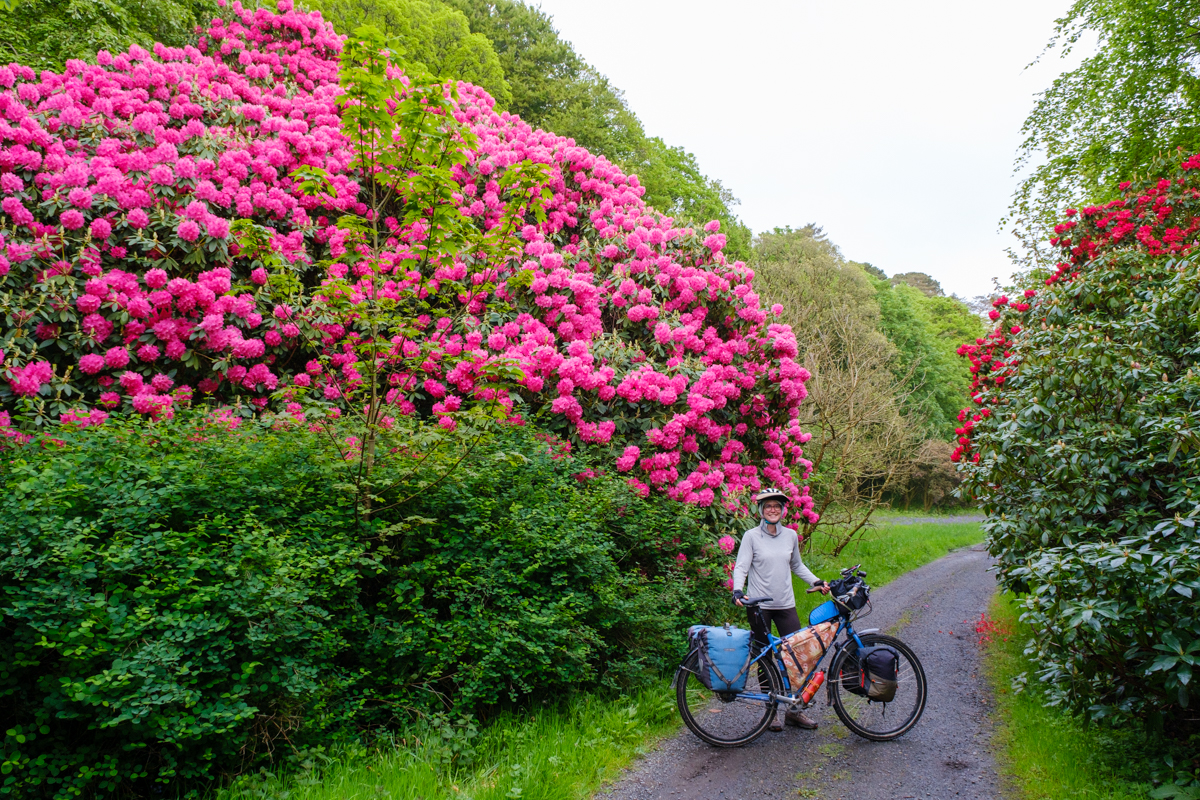
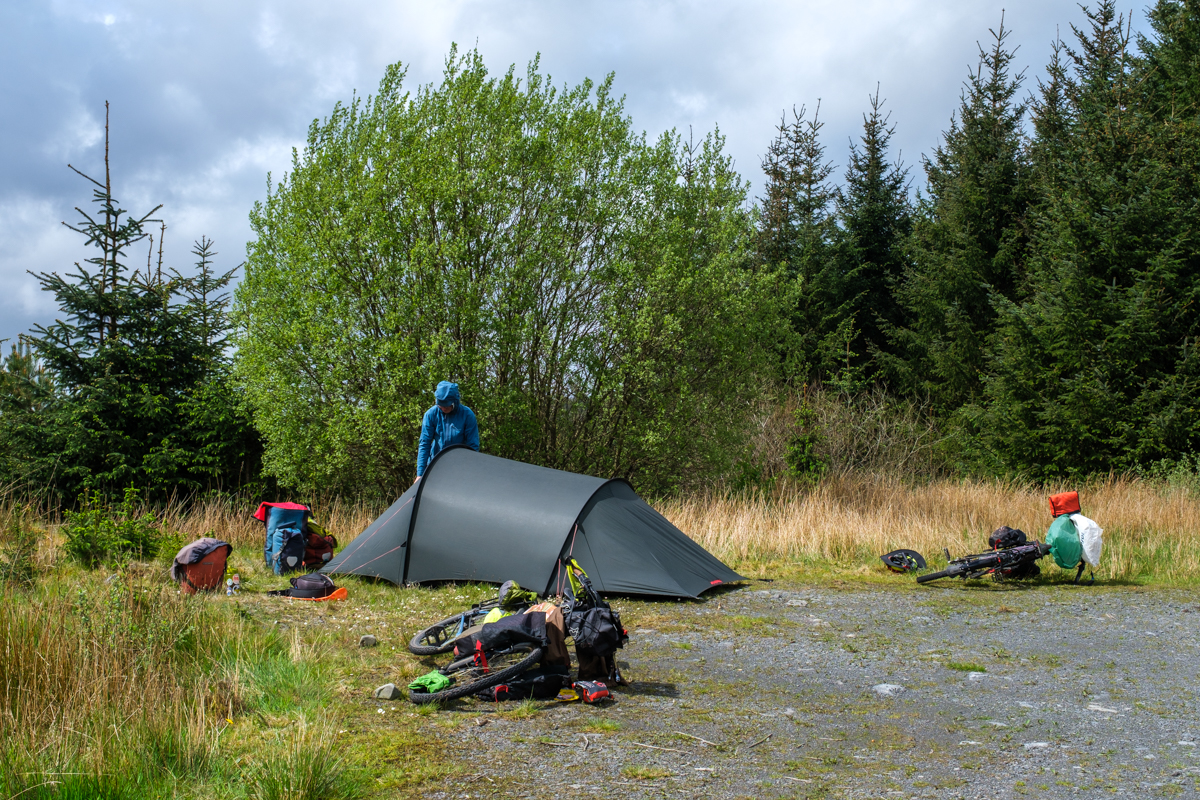
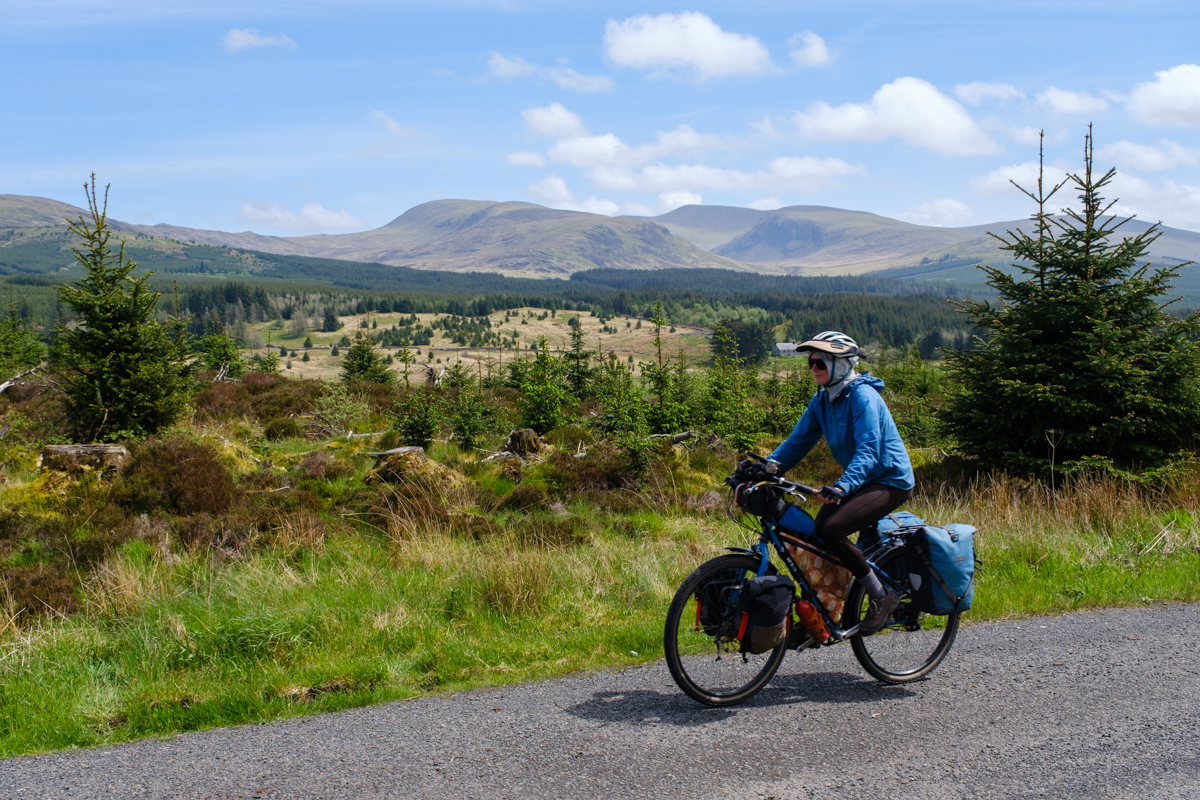
One of the first things that struck us about Scotland was how narrow the roads were. The byways in Ireland had also been narrow, but there was usually enough room for a car to safely pass a bicycle. In Scotland, however, the roads were often only wide enough for one car, so we constantly had to pull over at passing places to let cars go around us. It got pretty annoying, especially when we were going up a steep hill with cars waiting behind us and we didn’t have anywhere to pull over.
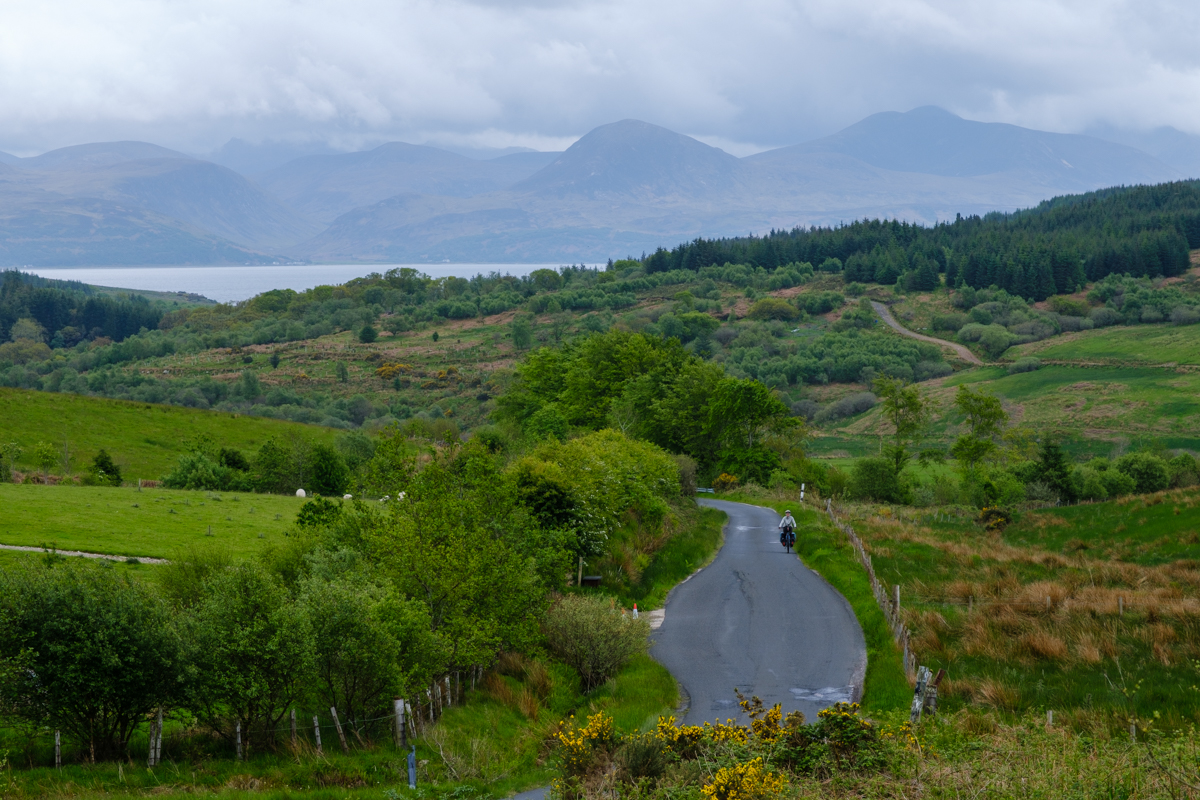
Isle of Arran
We rode most of the way around the Isle of Arran, which is often called “Scotland in miniature,” since you can find a little bit of everything that Scotland is famous for on the island. Mountains, scenic beaches, distilleries, and locally made ice cream to name just a few of the attractions. We fittingly experienced the full gamut of weather over our two days on the island, from sunshine to mist to heavy rain and wind.
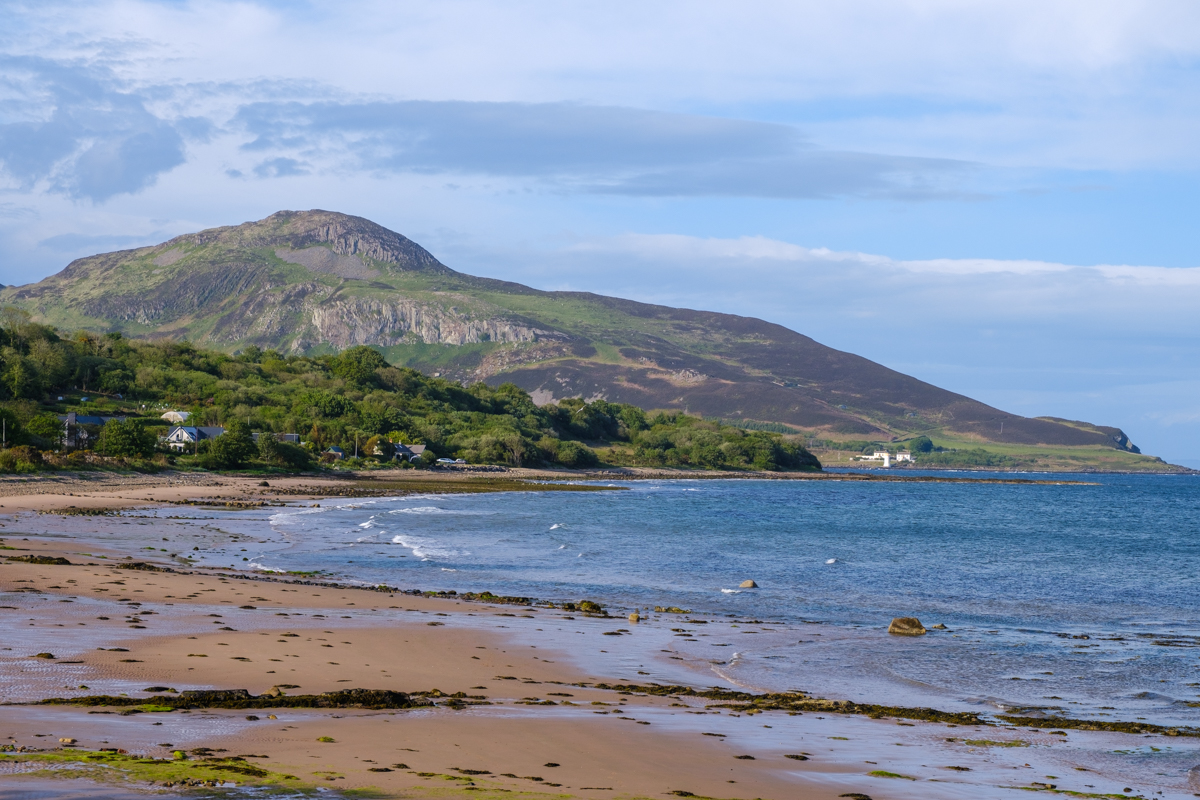
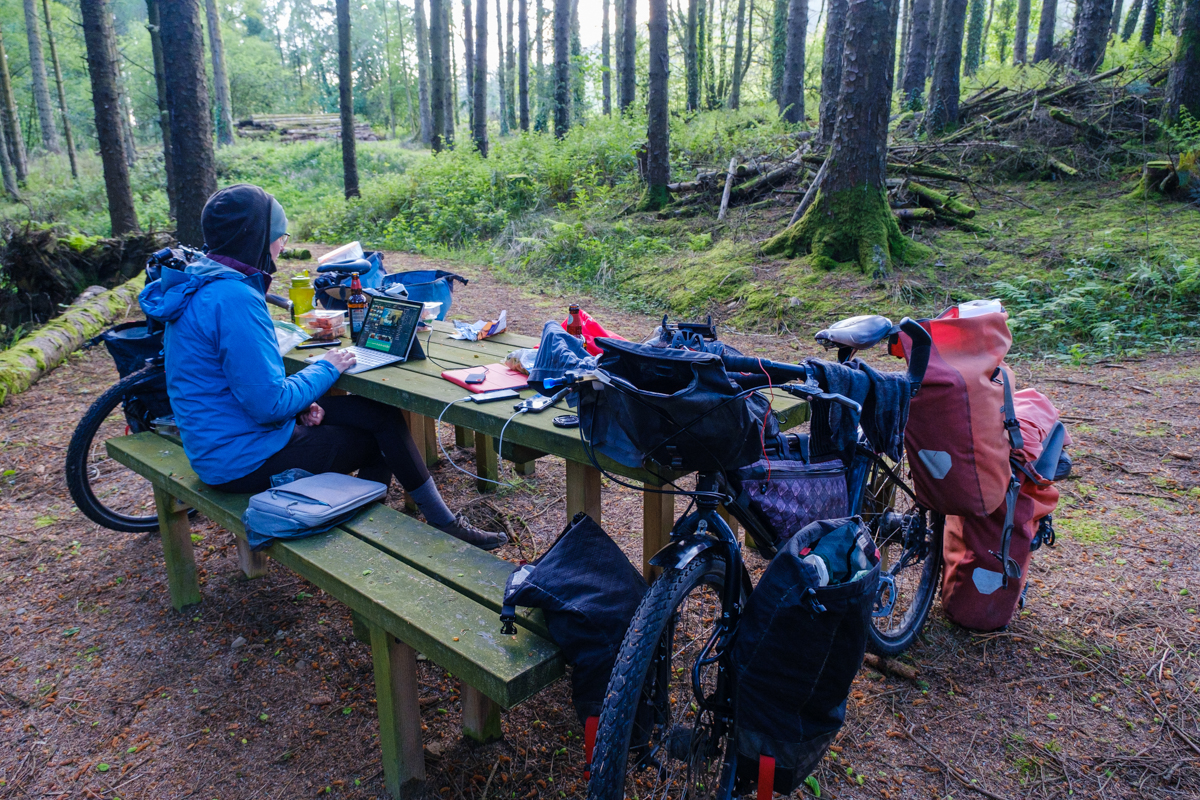
Loch Lomond
Andrew’s mom was going to meet up with us in Glasgow, and we decided to take a day off and go hiking in Loch Lomond since we had some extra time. We set up a base camp down a dirt road, hid our bikes in the woods, and hiked up Ben Donich. It was a 10% chance of rain that day but it wound up pouring on us, which turned the approach into more of a bog than usual.
The wind whipped up to high speed, and any exposed skin (especially our hands) turned bright red and freezing cold. The other groups we passed on the way up turned around before reaching the summit, which was probably smart. We did get a brief window with a nice view from the summit, and it felt like we were getting the full Scottish hill walking experience.
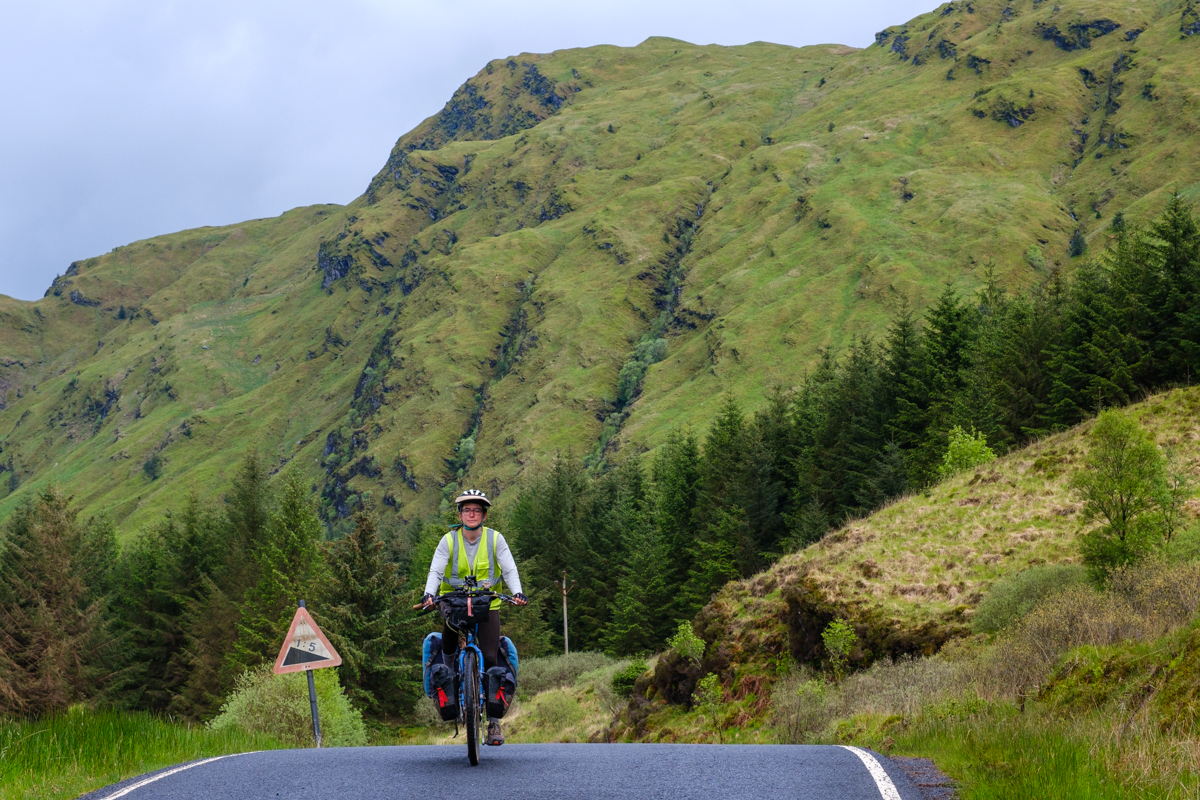
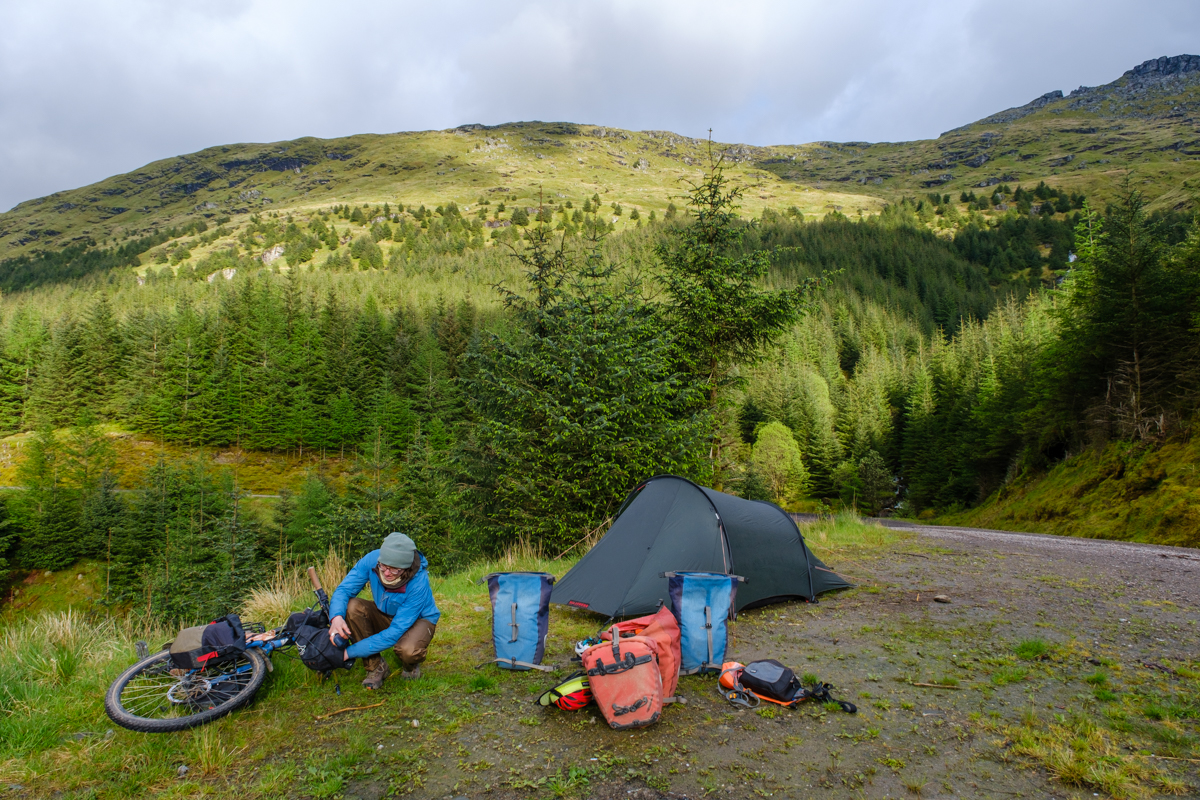
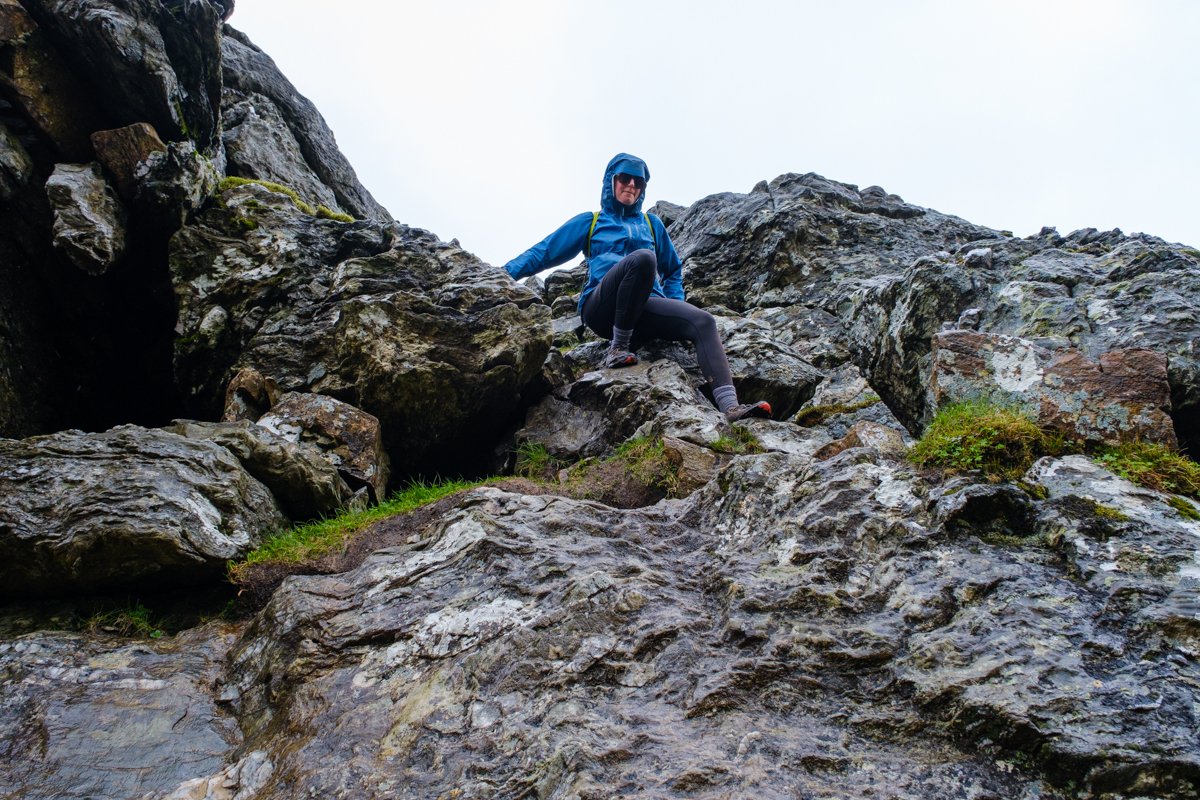
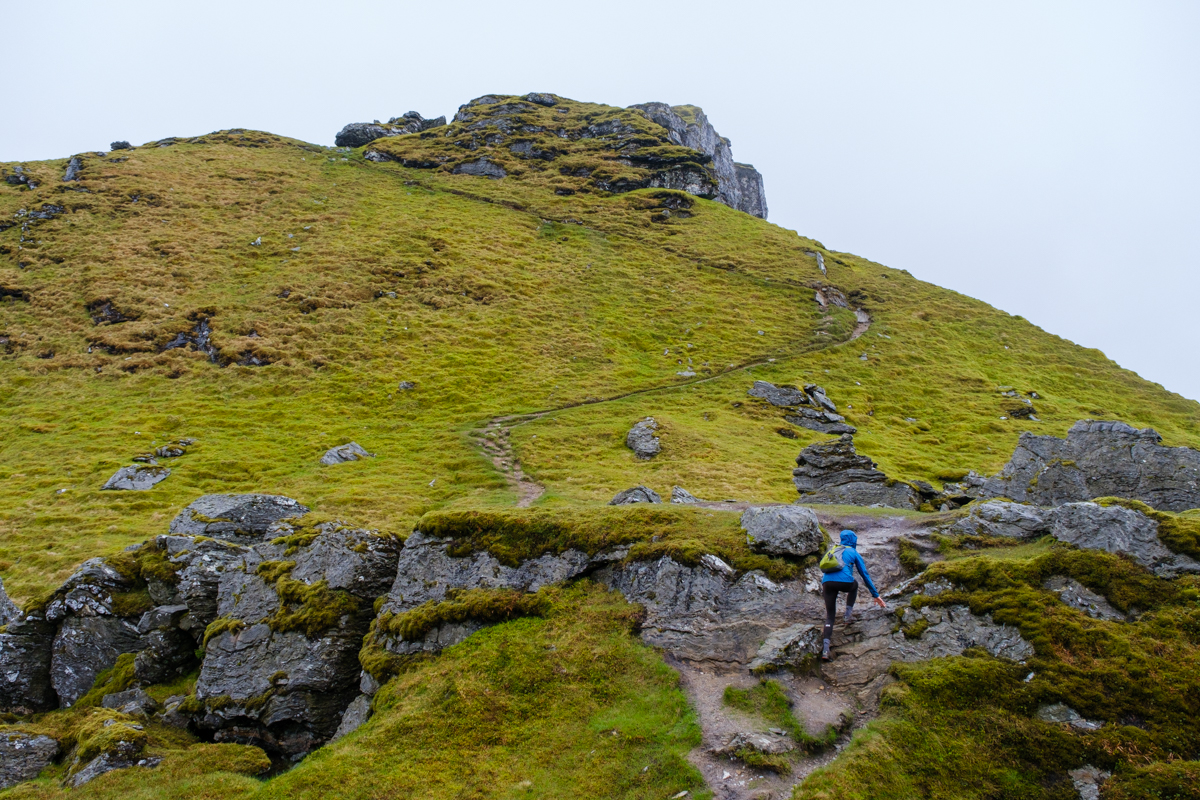
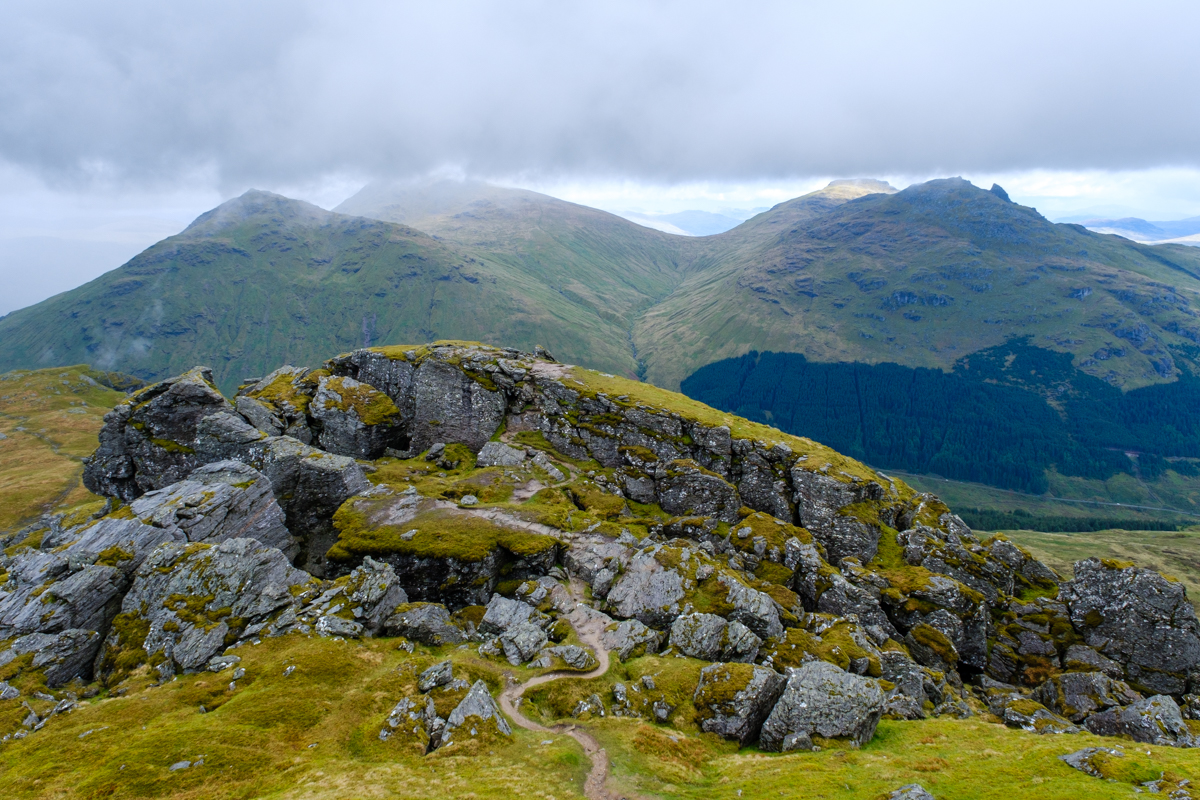
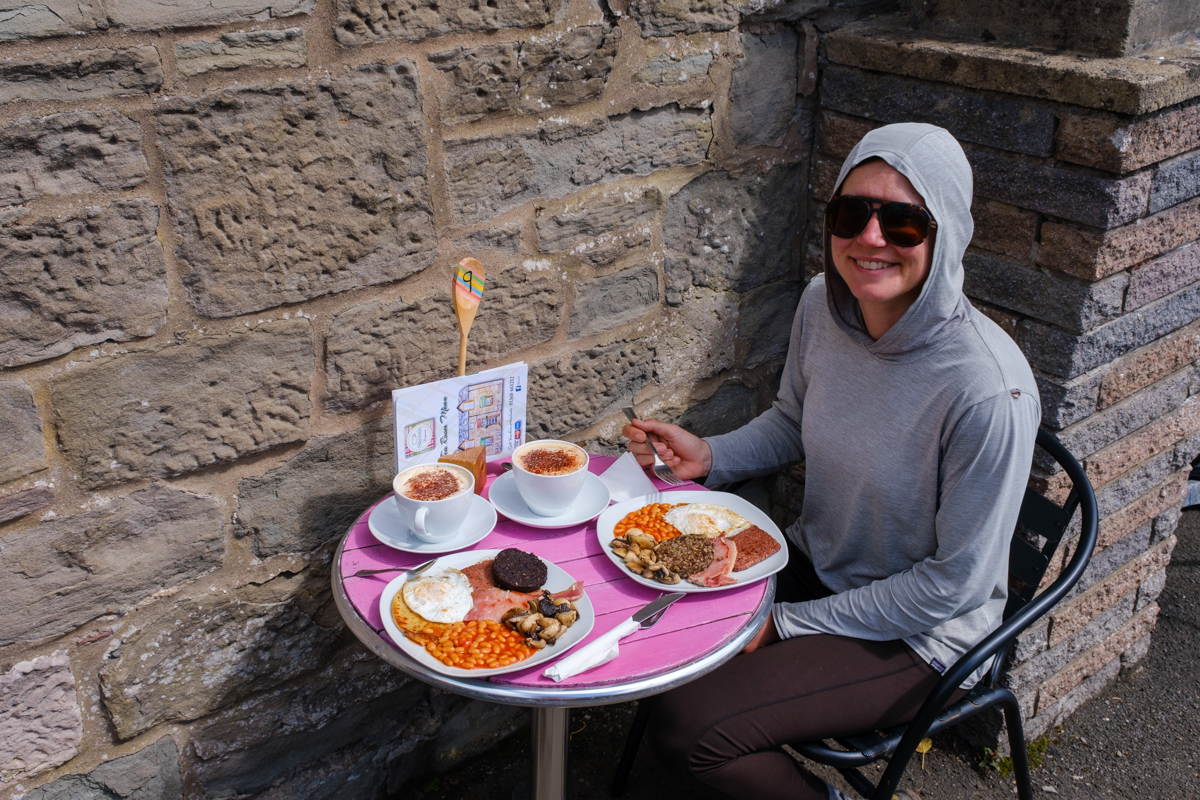
Glasgow and Cairngorms National Park
We met up with Andrew’s mom in Glasgow, and the weather turned sunny and beautiful for the whole time she was in Scotland! After exploring Glasgow for a day, we took a train to Aviemore to hike in the Cairngorms. We didn’t have train reservations for our bikes, but we were able to board without a problem.
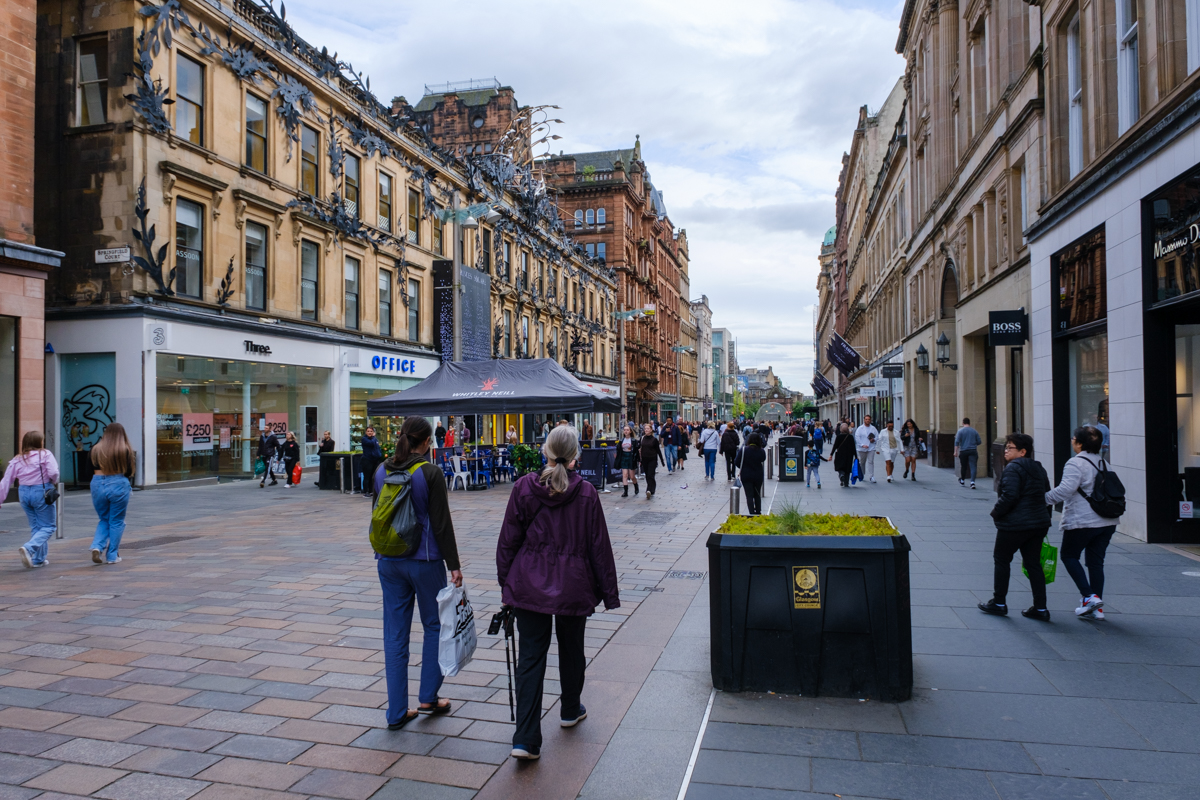
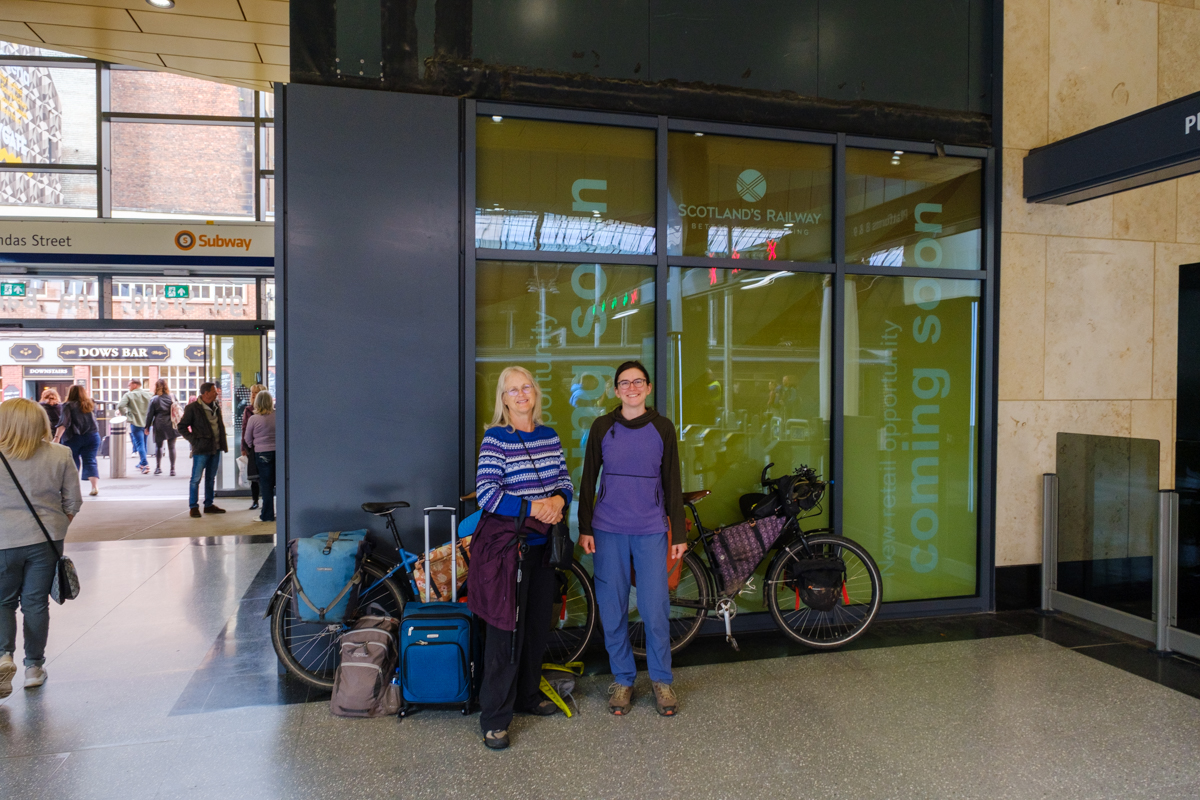
The bus system in Aviemore was great for getting around the park, and it was awesome to do a whole mini-vacation without relying on a car. A car-less vacation to a national park in the US would be near impossible, with a few exceptions, so having that option made the trip a lot more relaxed. We did a couple different hikes in the Cairngorm Mountain area and also took a nice day trip to Inverness before returning to Glasgow.
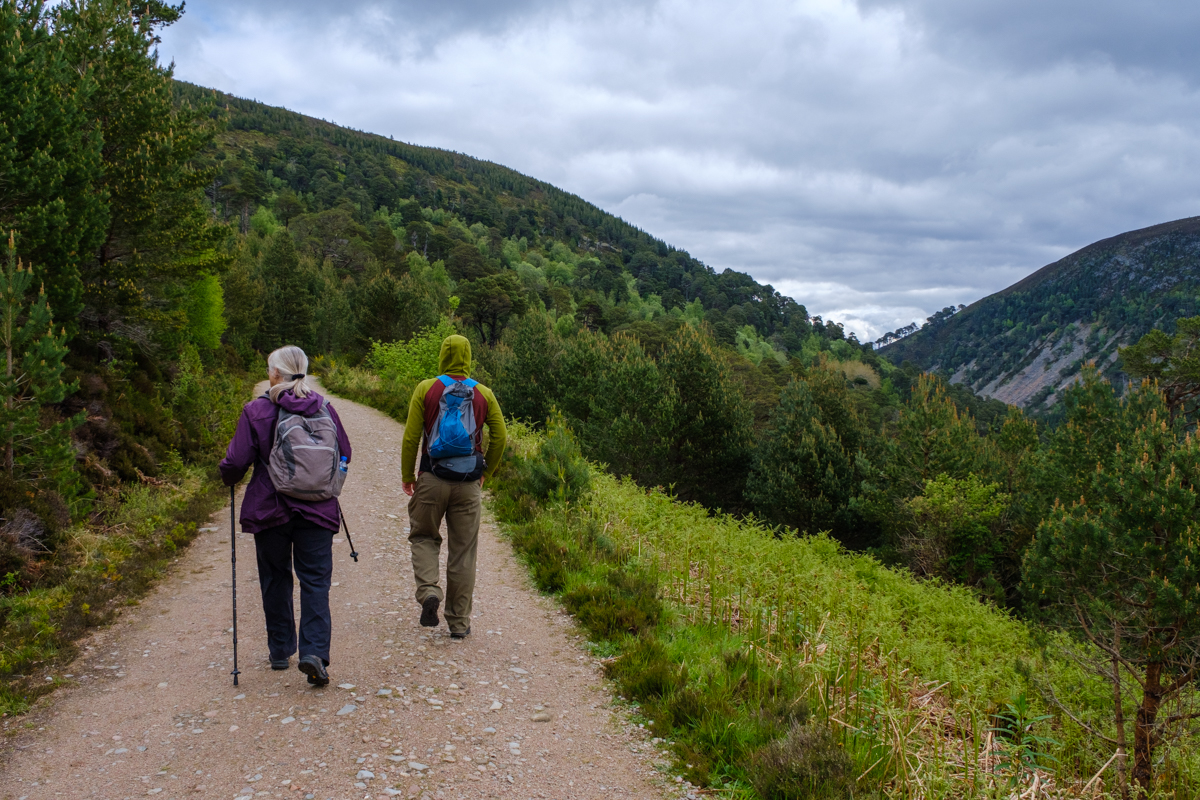
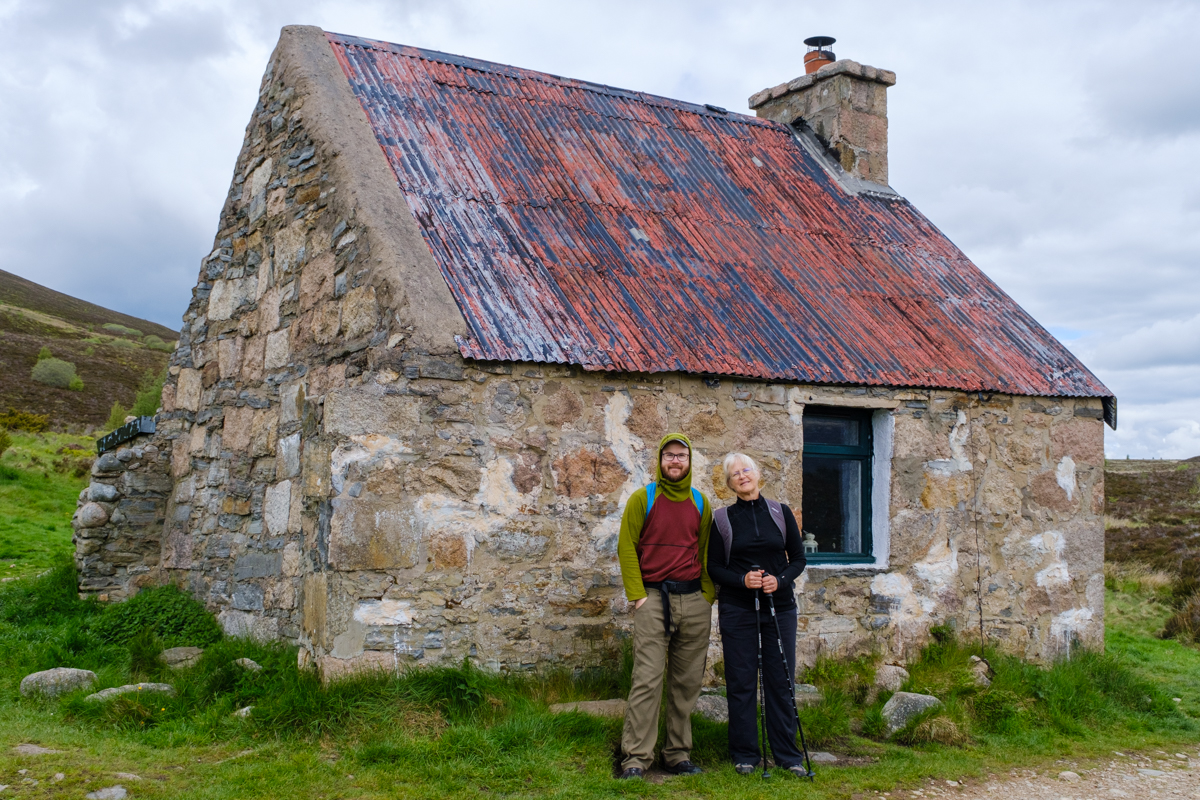
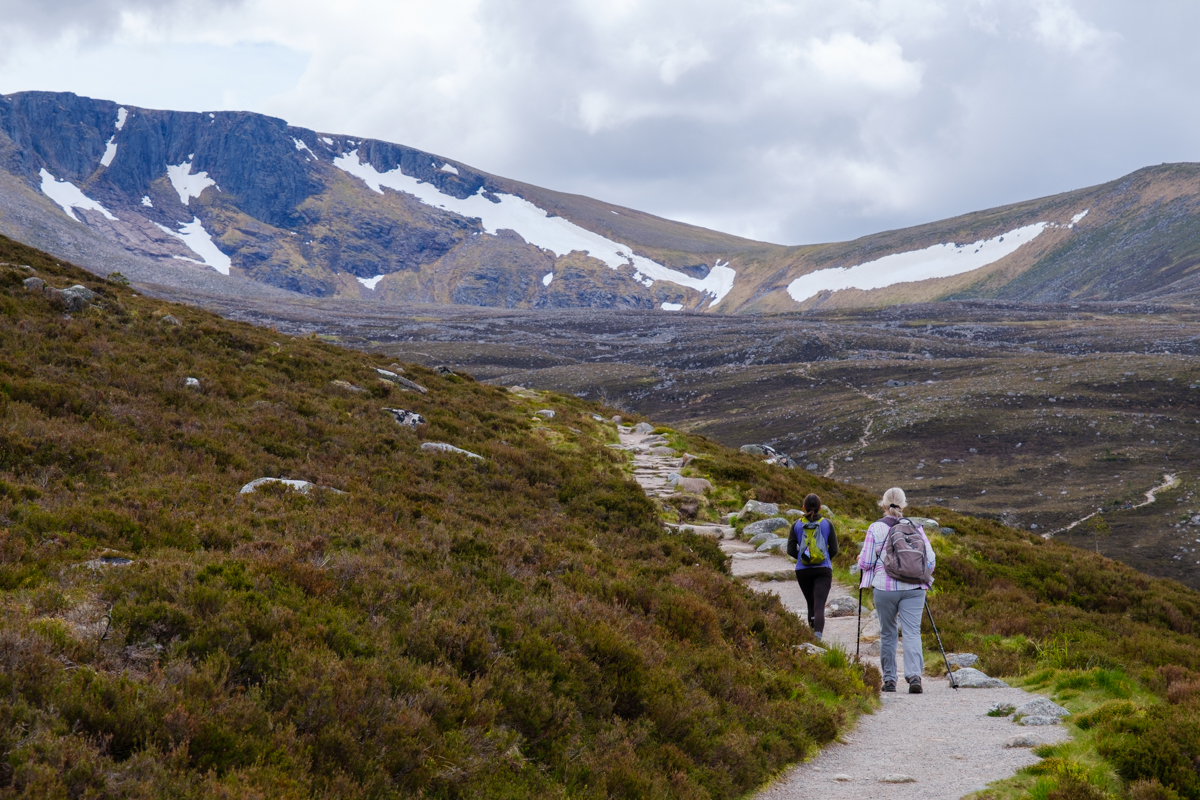
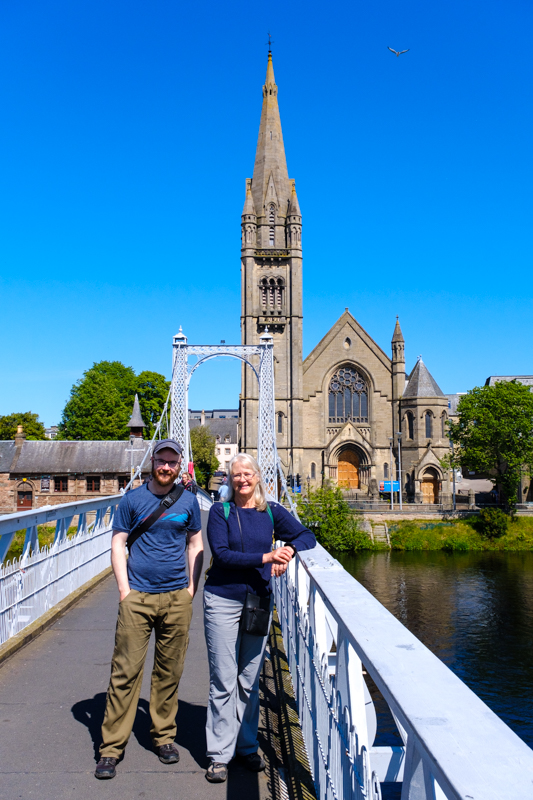
Glasgow to Oban
After leaving Glasgow, we connected to Scottish cycling route 78 to make our way to Oban, where we would take a ferry to the Outer Hebrides. The 78 was a really nice section of riding, featuring quiet coastal roads that were frequented by road cyclists as well.
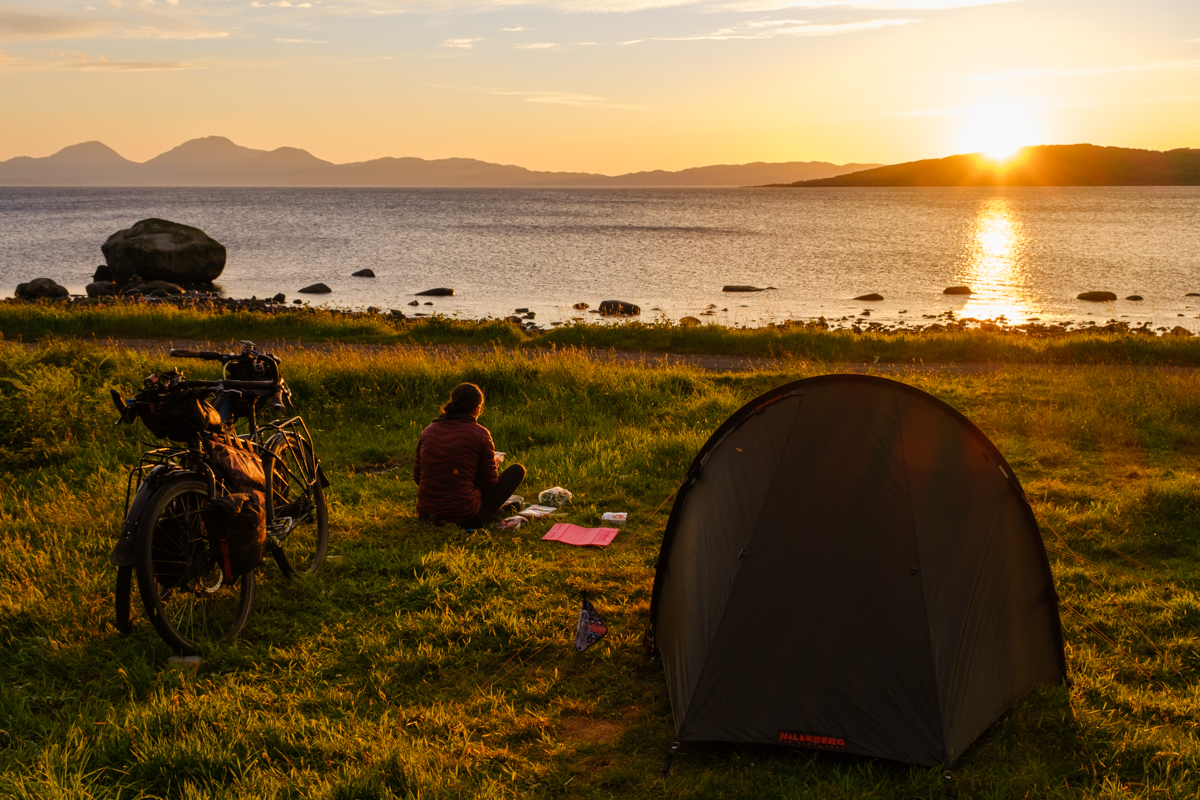
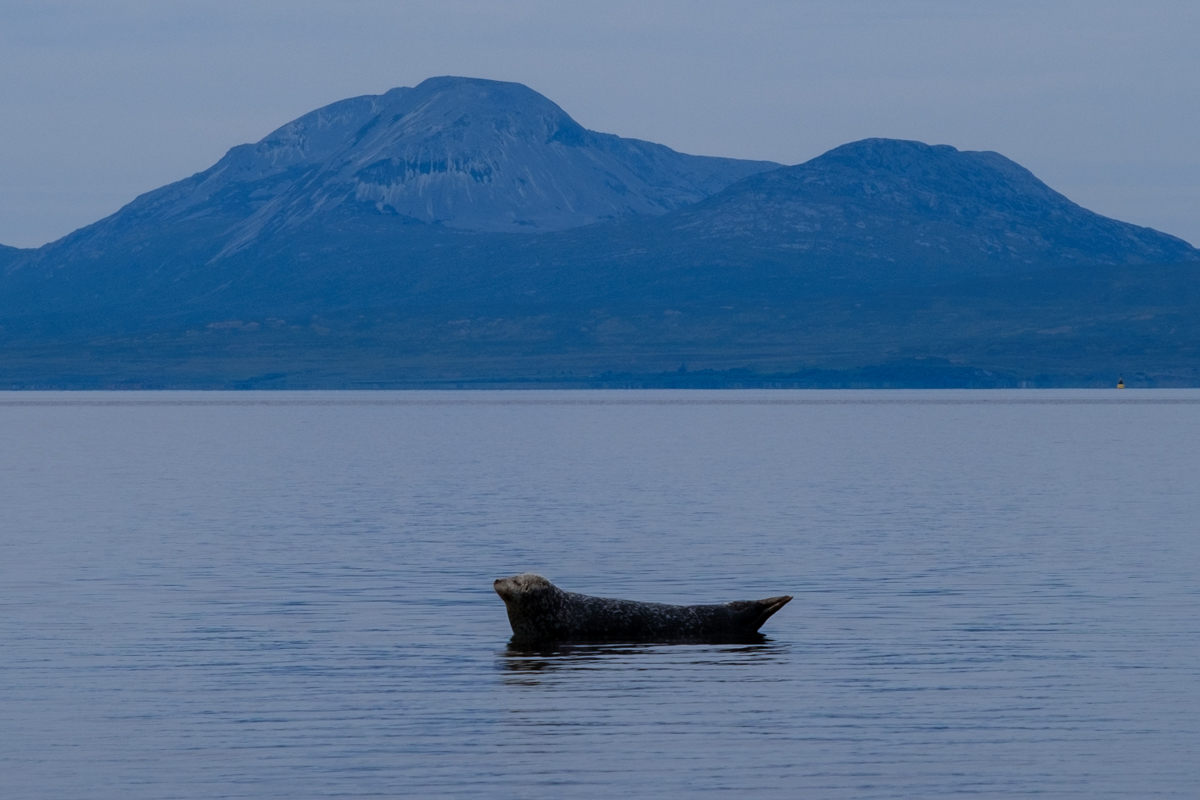
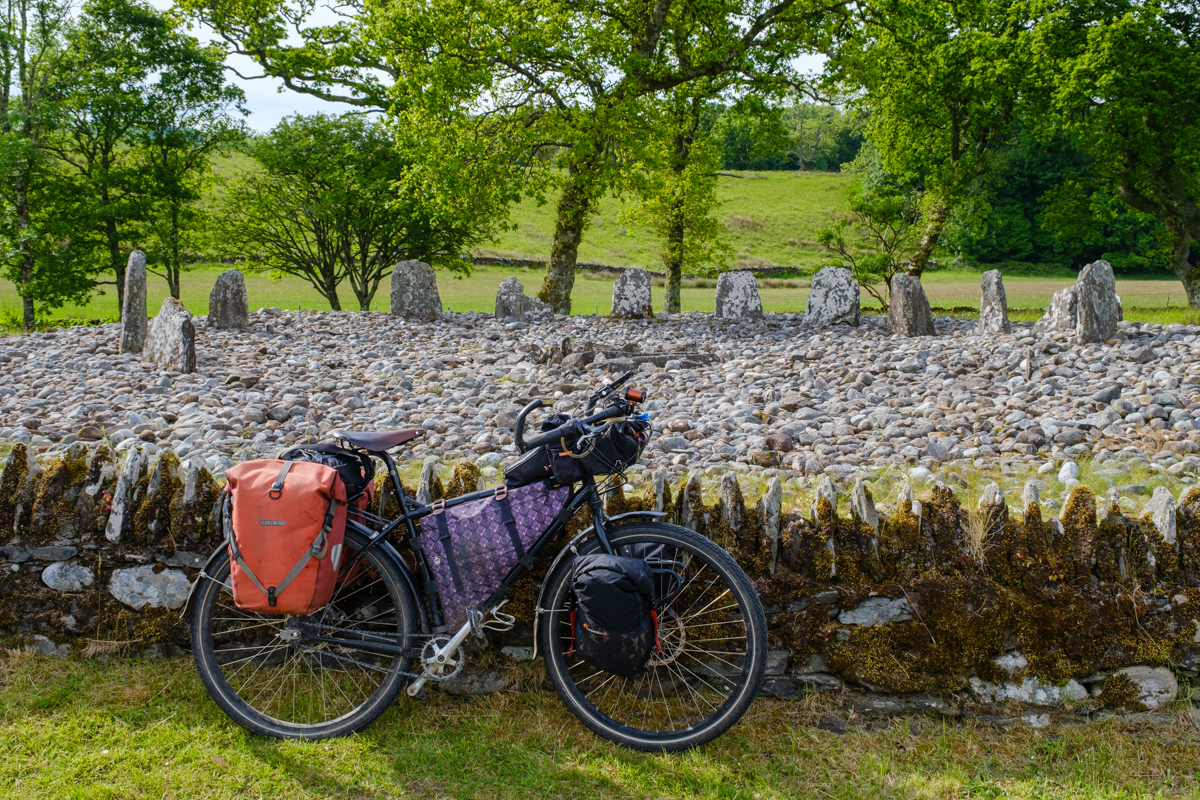
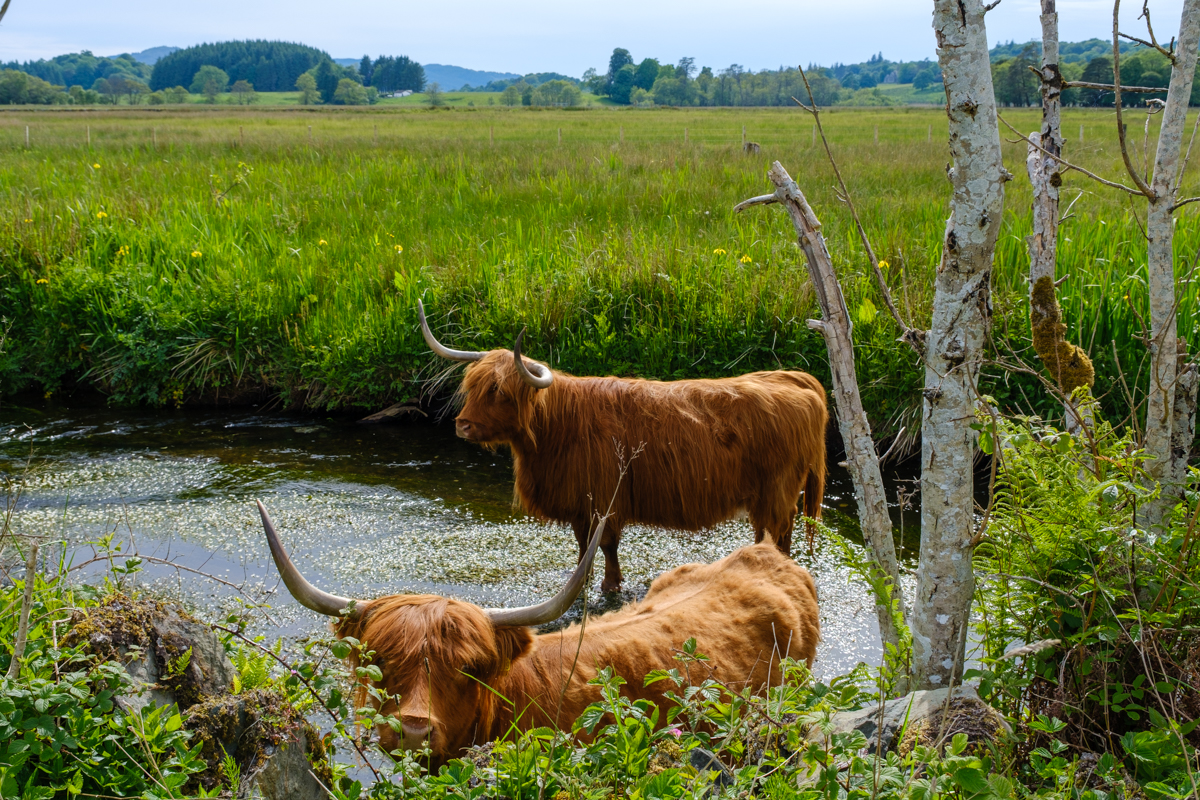
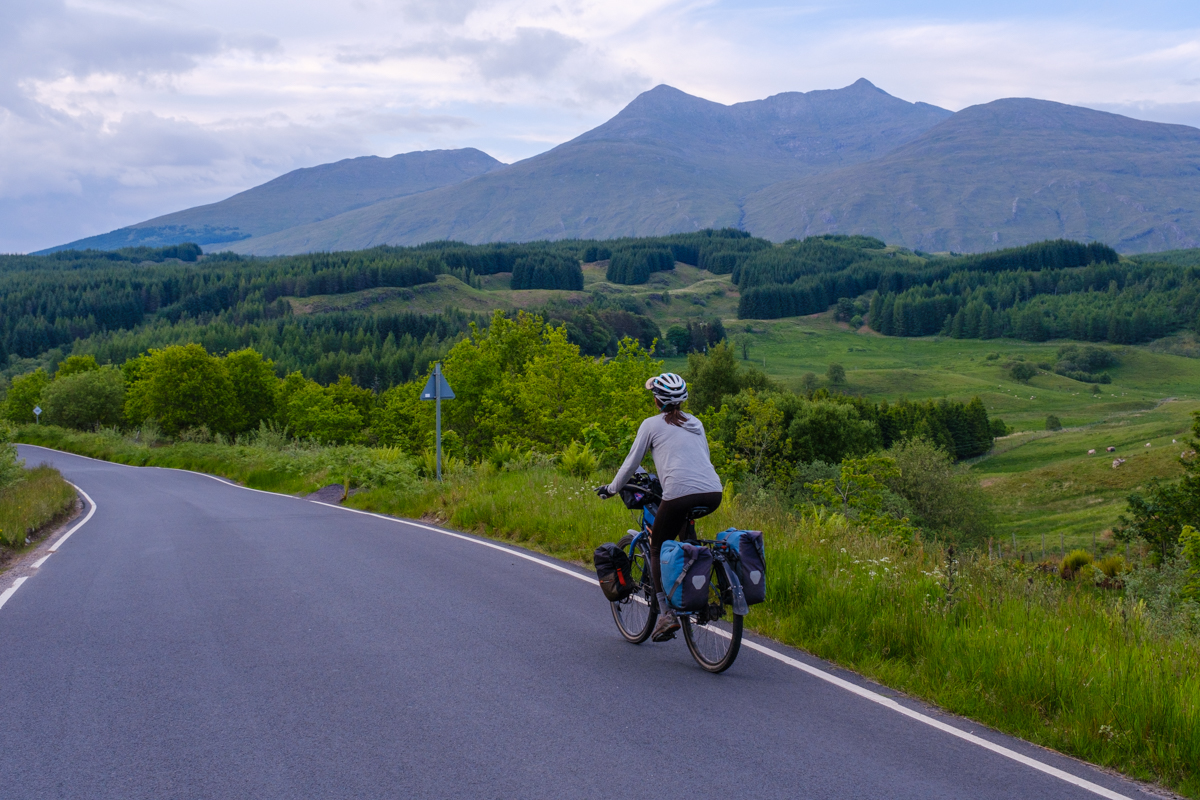

The Outer Hebrides
We took a 5 hour ferry from Oban to the Outer Hebrides, a beautiful string of remote islands and a popular cycling destination. Read about our experience on the Hebridean Way here.
The North Coast
After riding the Hebrides, we took a ferry to Ullapool and connected to the North Coast 500 route. While this area was very beautiful, it is also extremely popular with camper vans and RVs. The roads are narrow, as always, so especially in peak season it can be a bit of a headache to cycle.
While we complain about sharing the road with camper vans a lot, we met an extremely nice guy that was traveling in a converted ambulance, and he invited us into his van for tea on a rainy day. He told us that he had a long standing policy of offering hospitality to cyclists who were braving the weather, and his kindness really made our day. We also learned that he had ridden the length of Africa on a motorcycle with his son, so he was a very interesting guy to chat with for awhile.
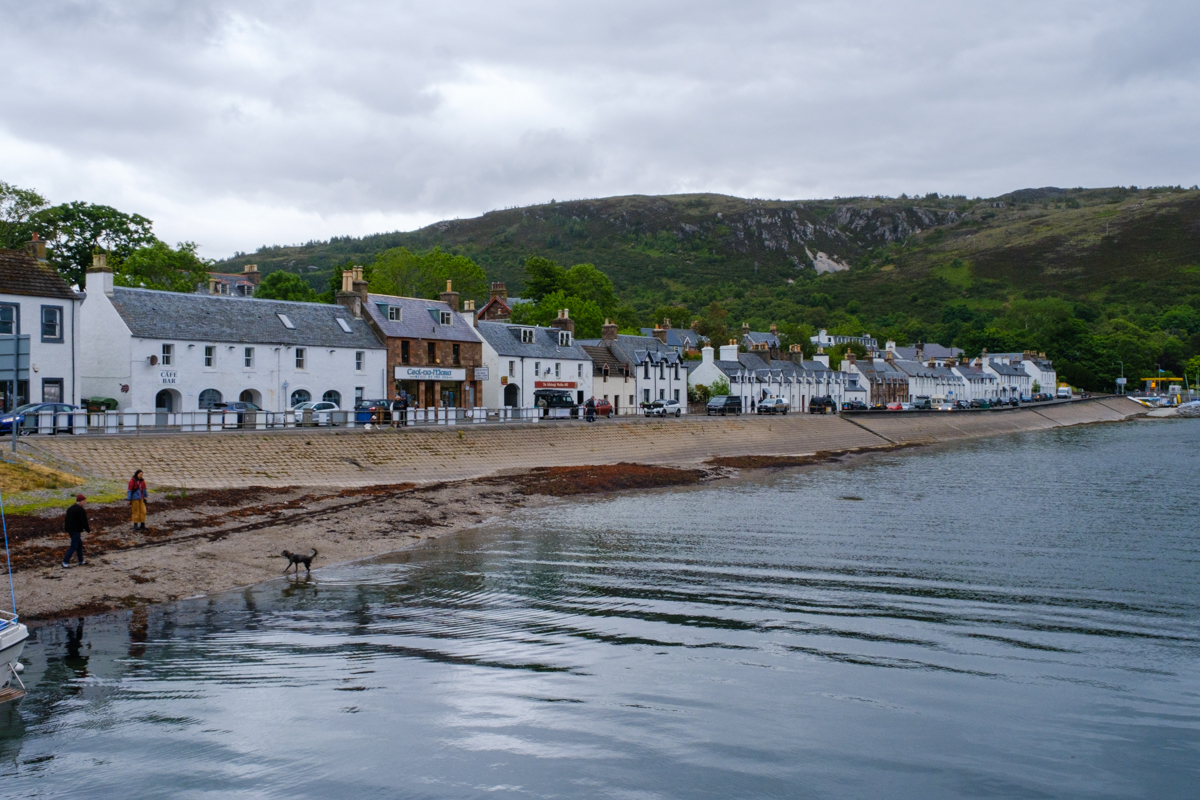
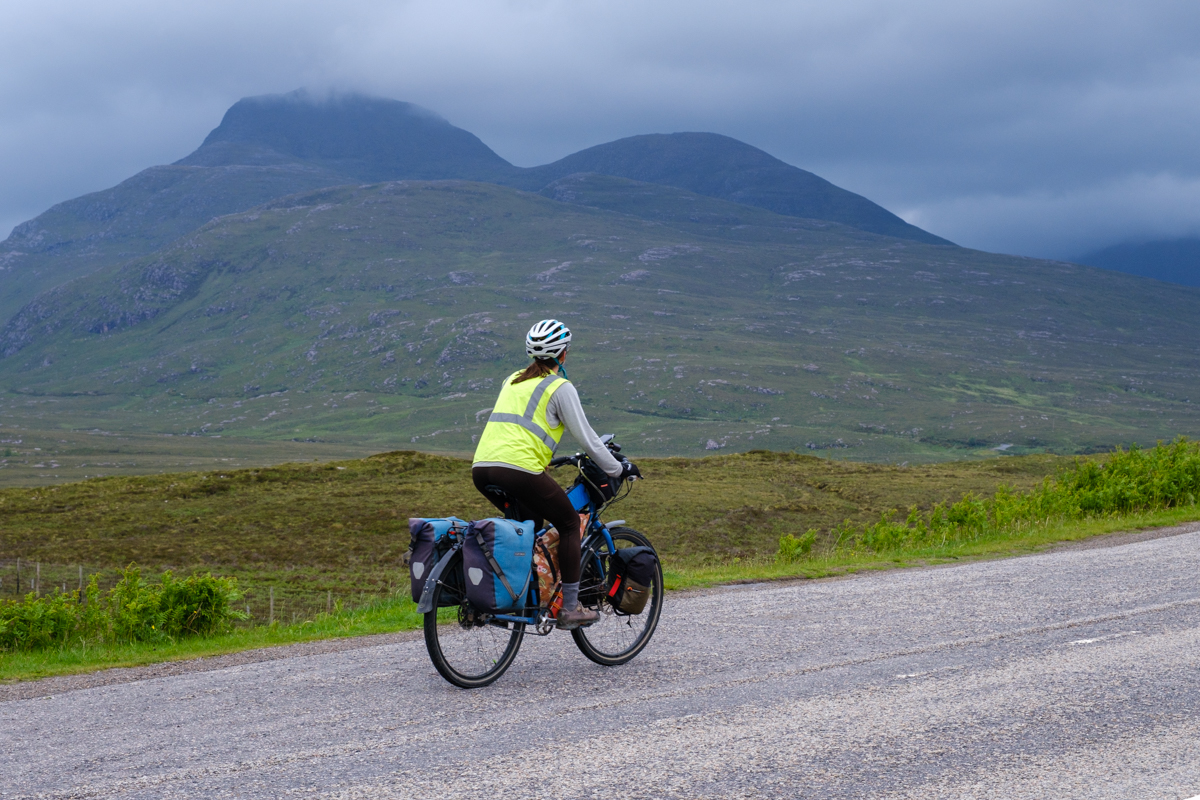
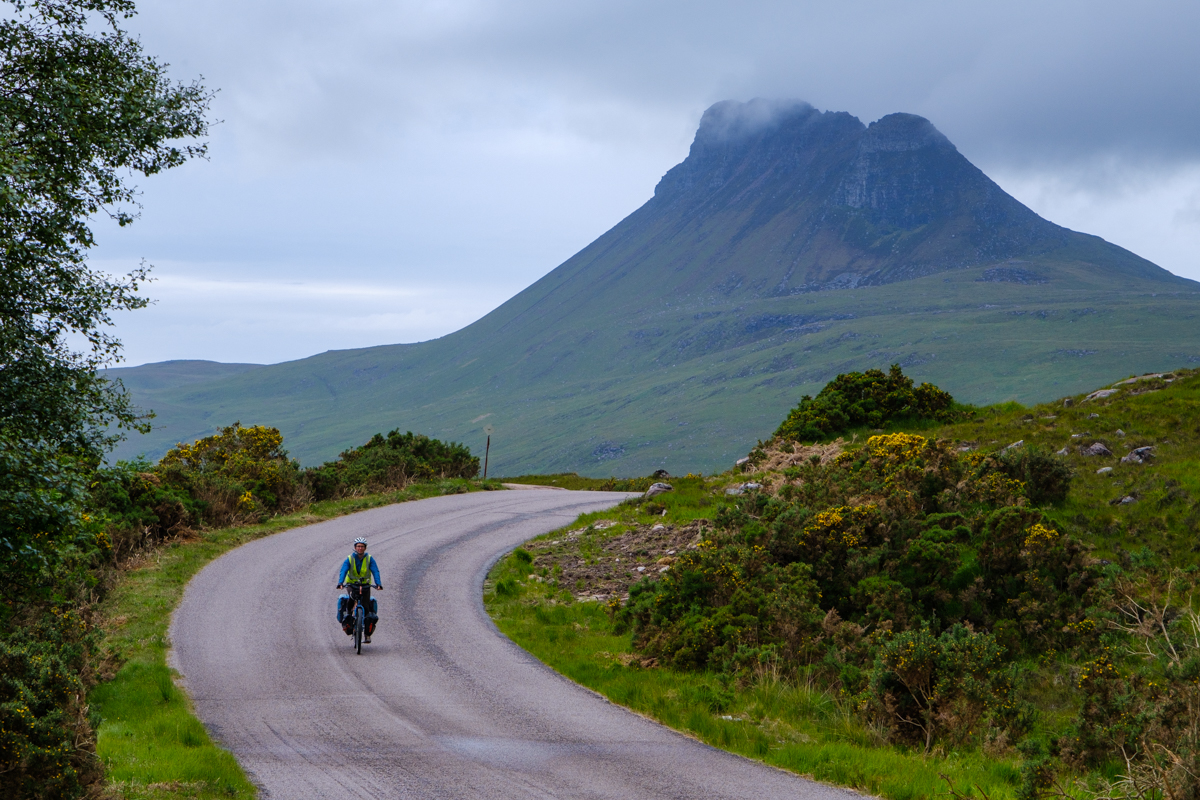
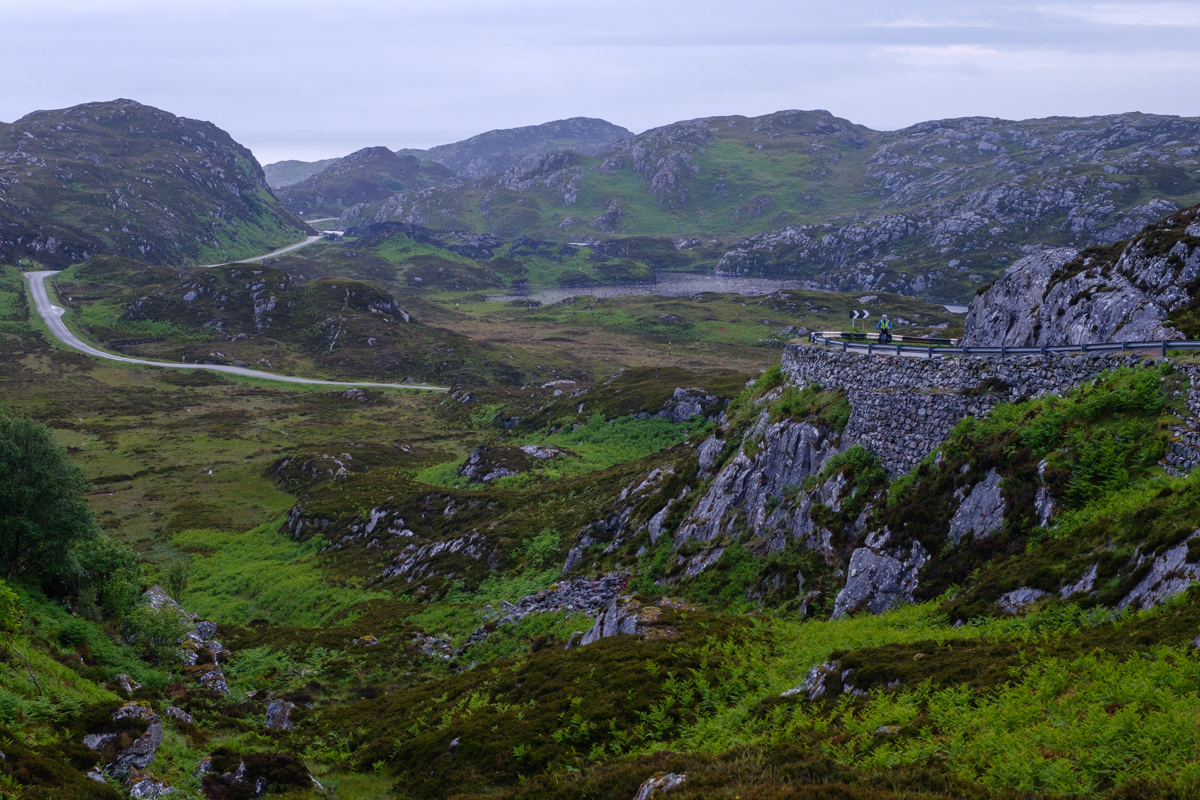
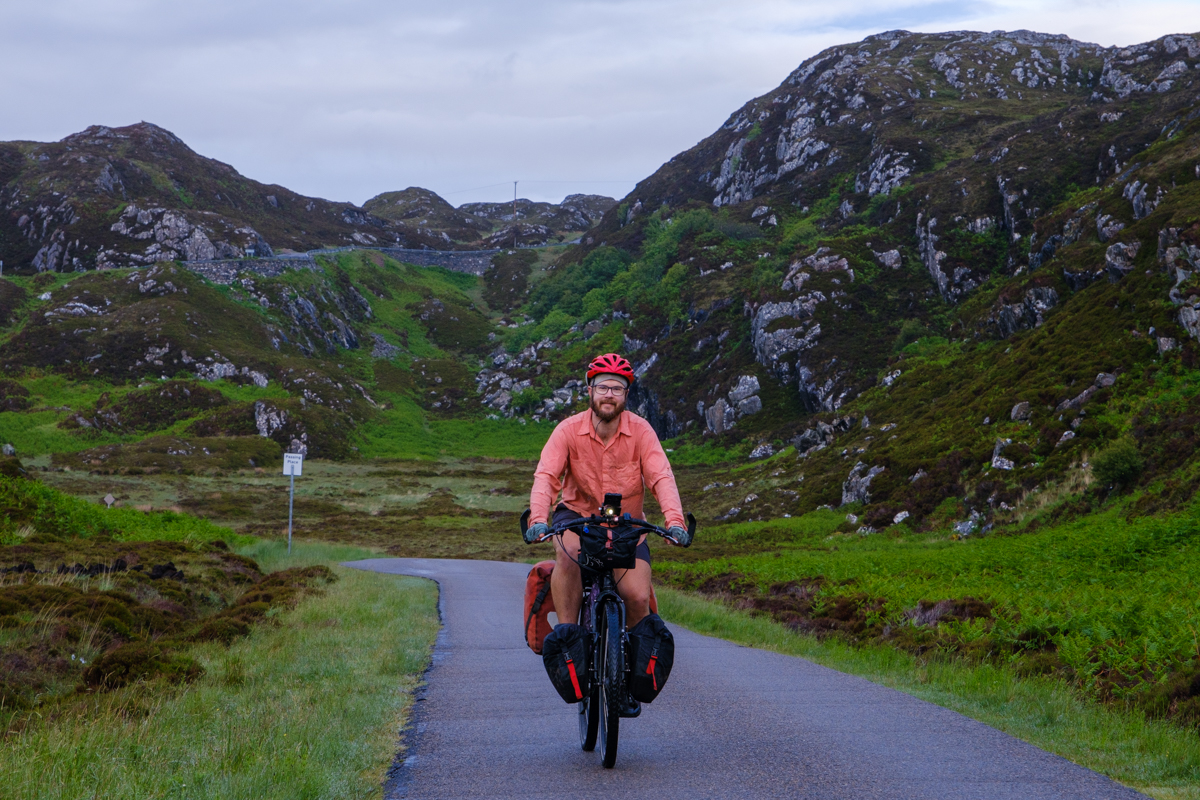
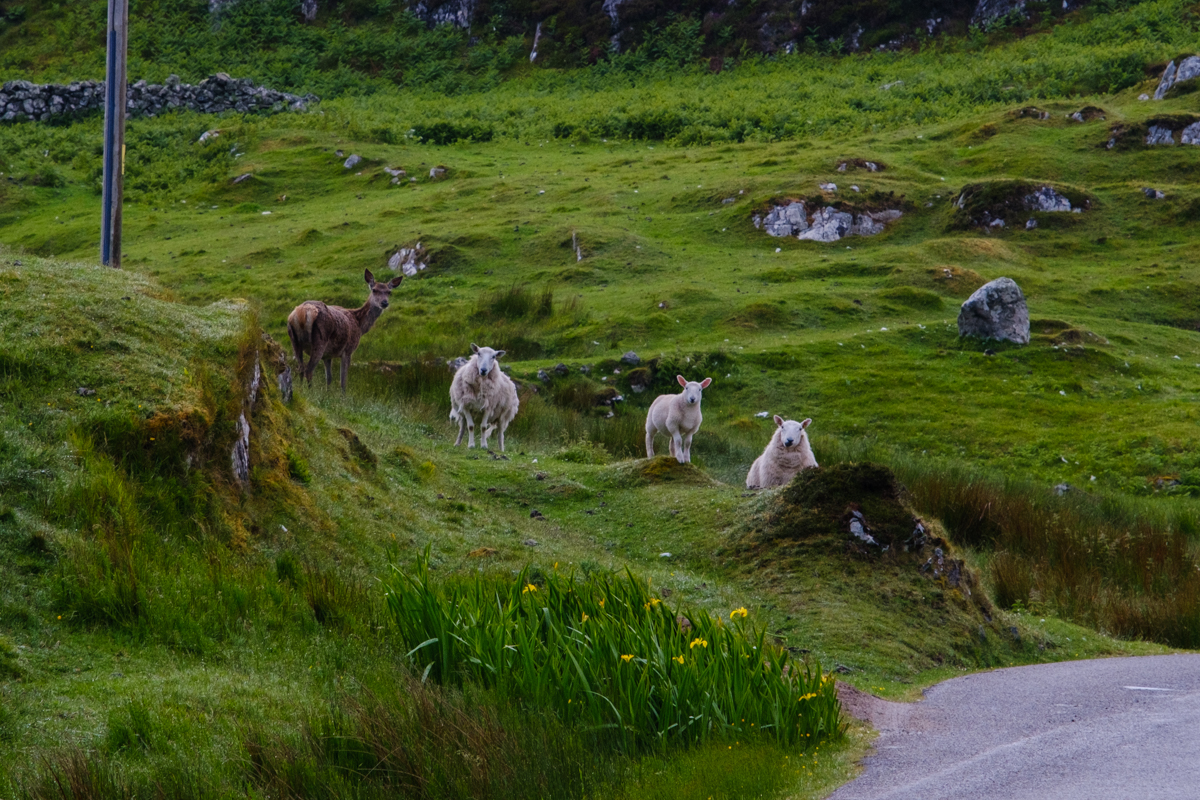
Who Lives in Scotland?
When we stopped for groceries in the small town of Scourie, it just so happened that the BBC was filming a documentary called “Who Lives in Scotland?” and was doing a segment on the owners of the grocery store.
The crew asked Andrew if he was OK being on camera before he went in, and he had a conversation with the owner about Coronation Chicken when he was checking out. For those who aren’t familiar, Coronation Chicken is a chicken salad recipe that was prepared for Queen Elizabeth’s coronation in 1953. It’s now available in a lot of grocery stores and we loved it in wraps or on croissants for an easy dinner. The documentary hasn’t come out yet but we’re hoping that Andrew’s appearance makes the cut!
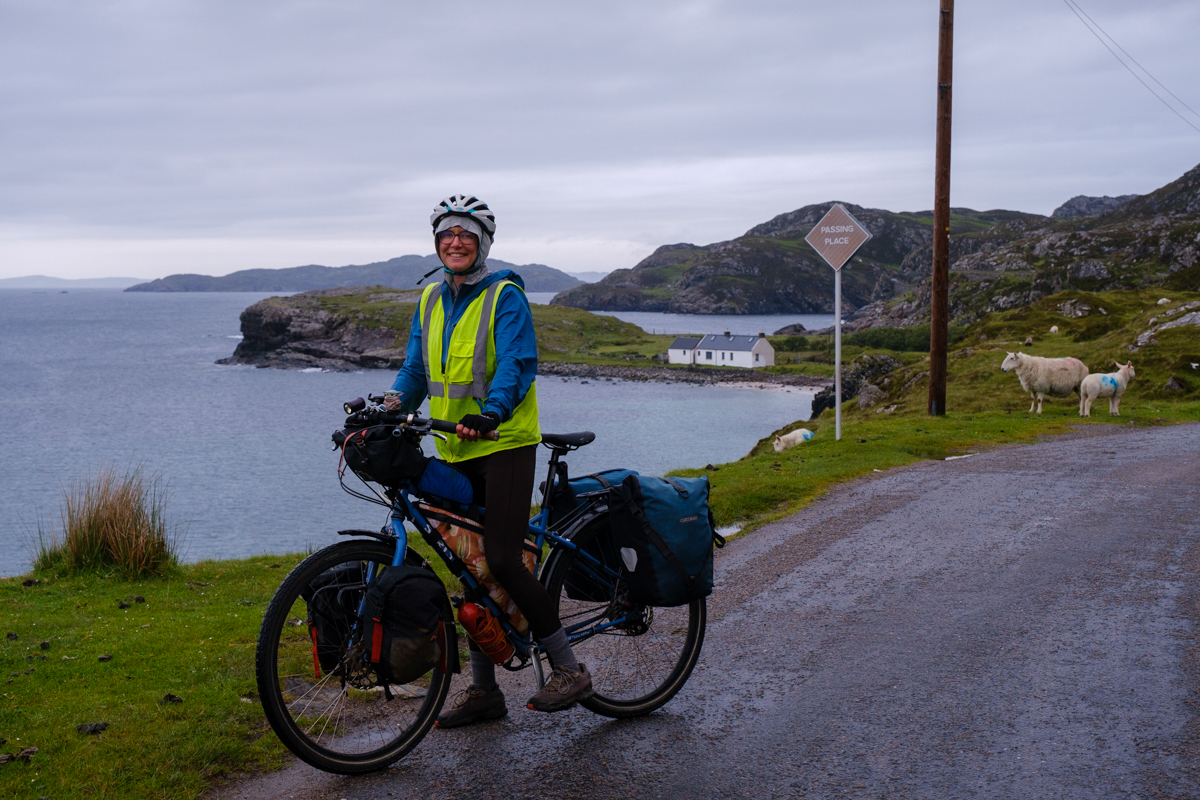
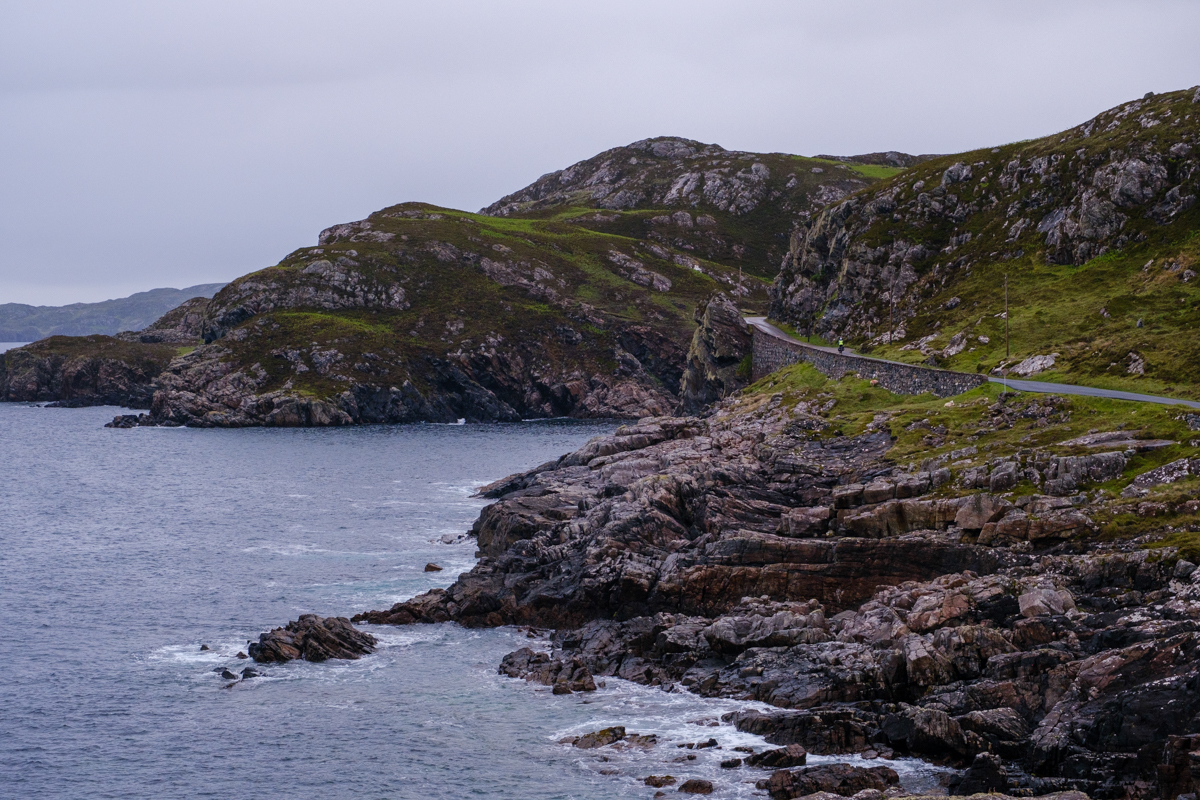
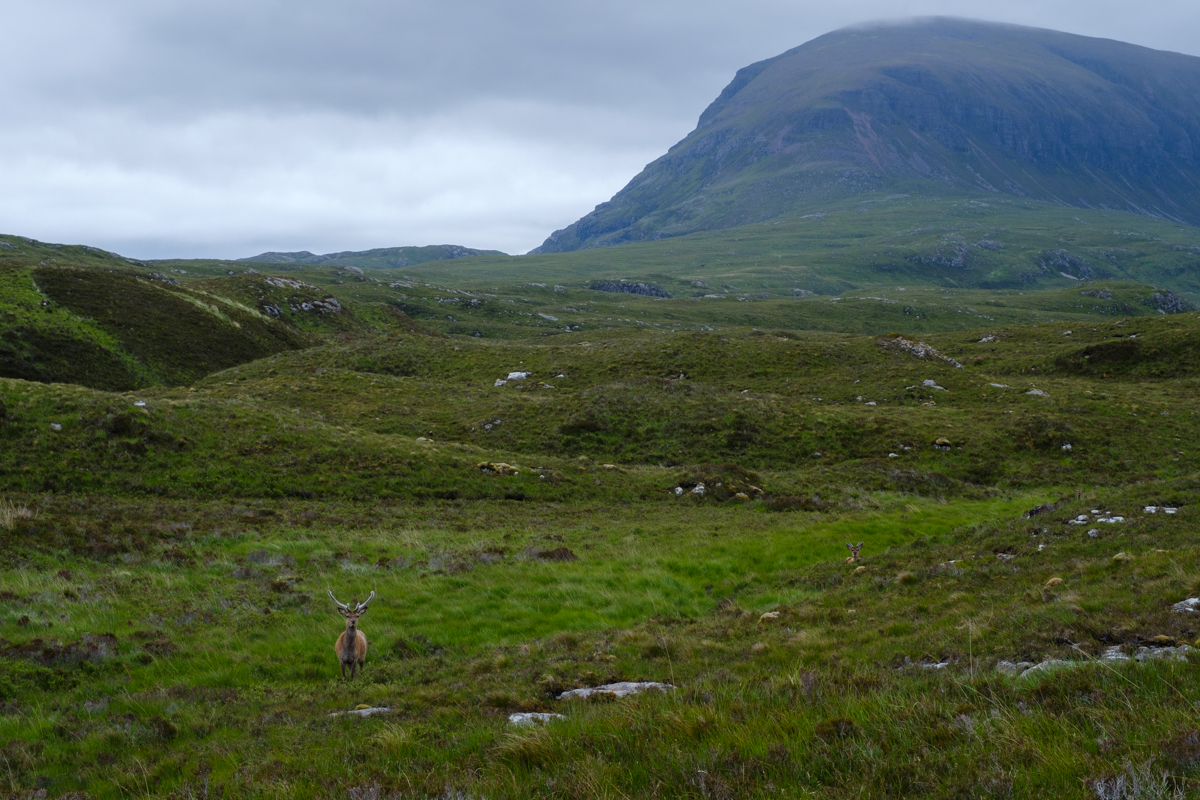
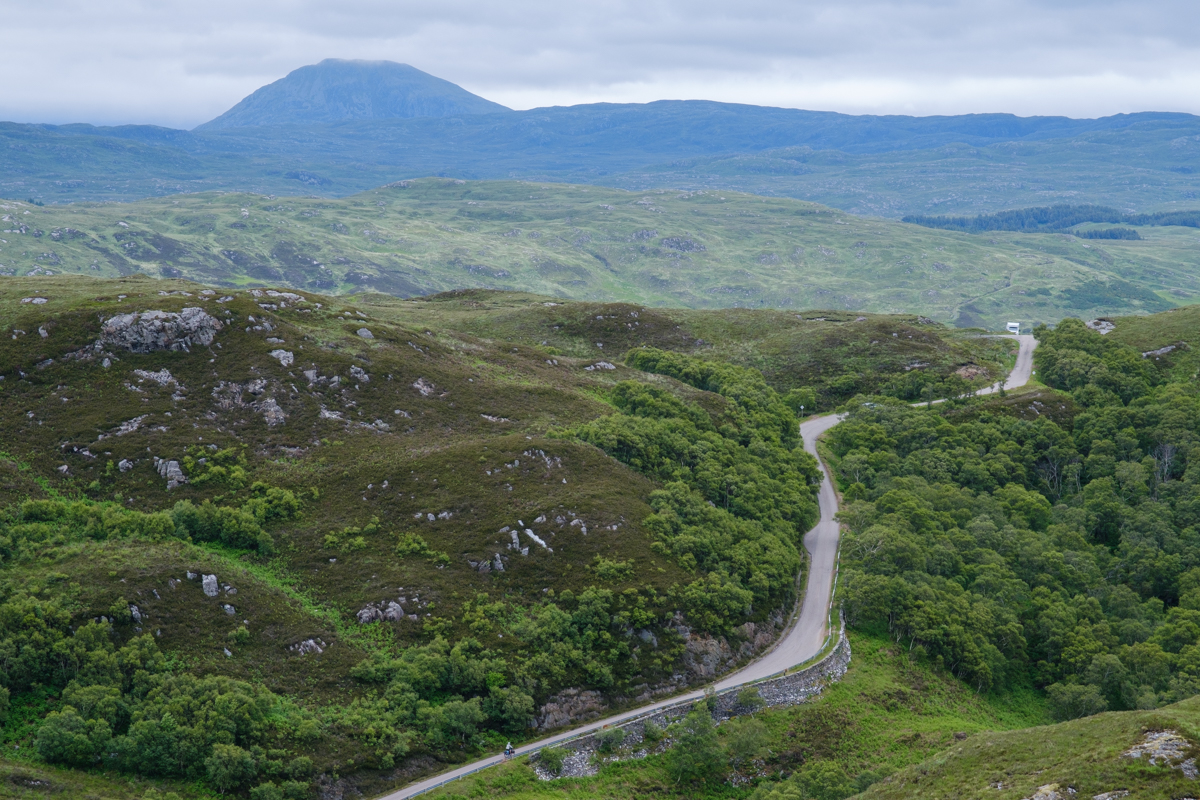
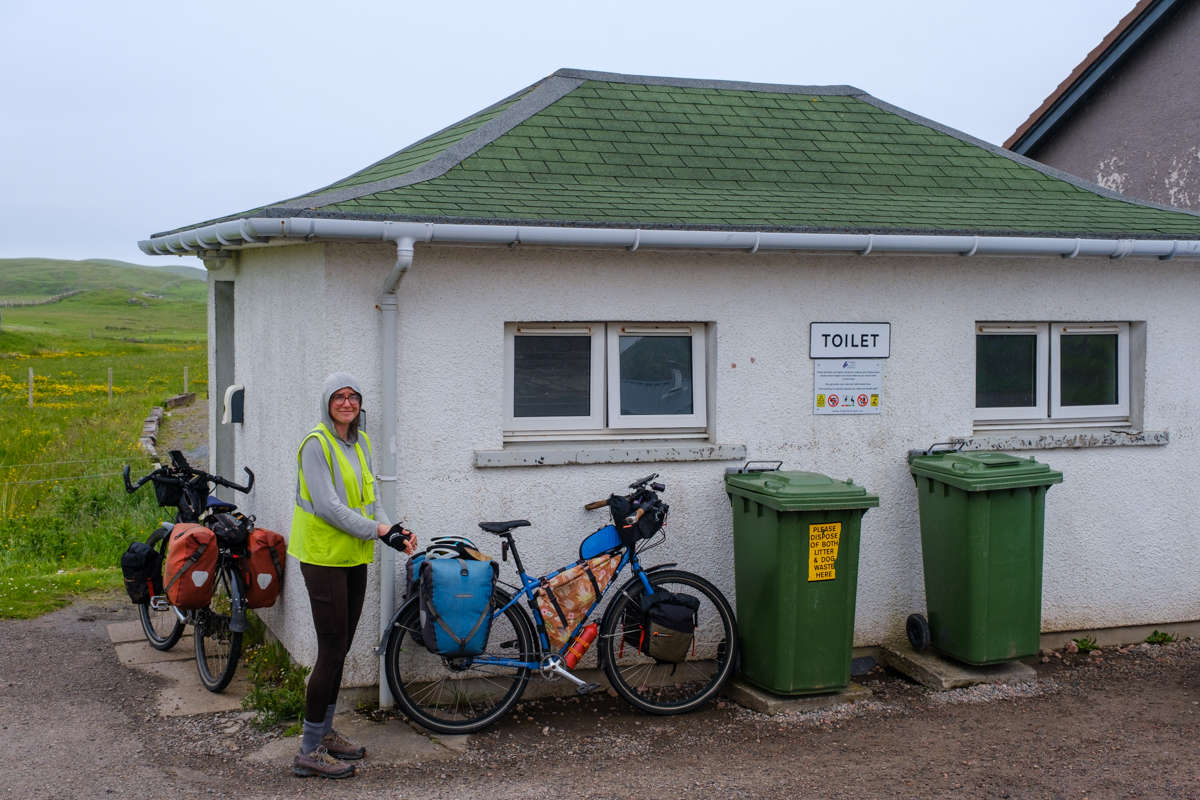
Tongue and The Road South
Tongue was the northernmost point of our route, and from there we headed south toward Edinburgh. The road between Tongue and Tain was very scenic, but we were battling a strong headwind most of the way. The weather made it some of the most challenging riding we faced the whole trip, with strong side winds pushing us off the road and headwinds dramatically slowing our uphill progress. We eventually made it to Edinburgh and spent a half day walking around the city and its many historic buildings.
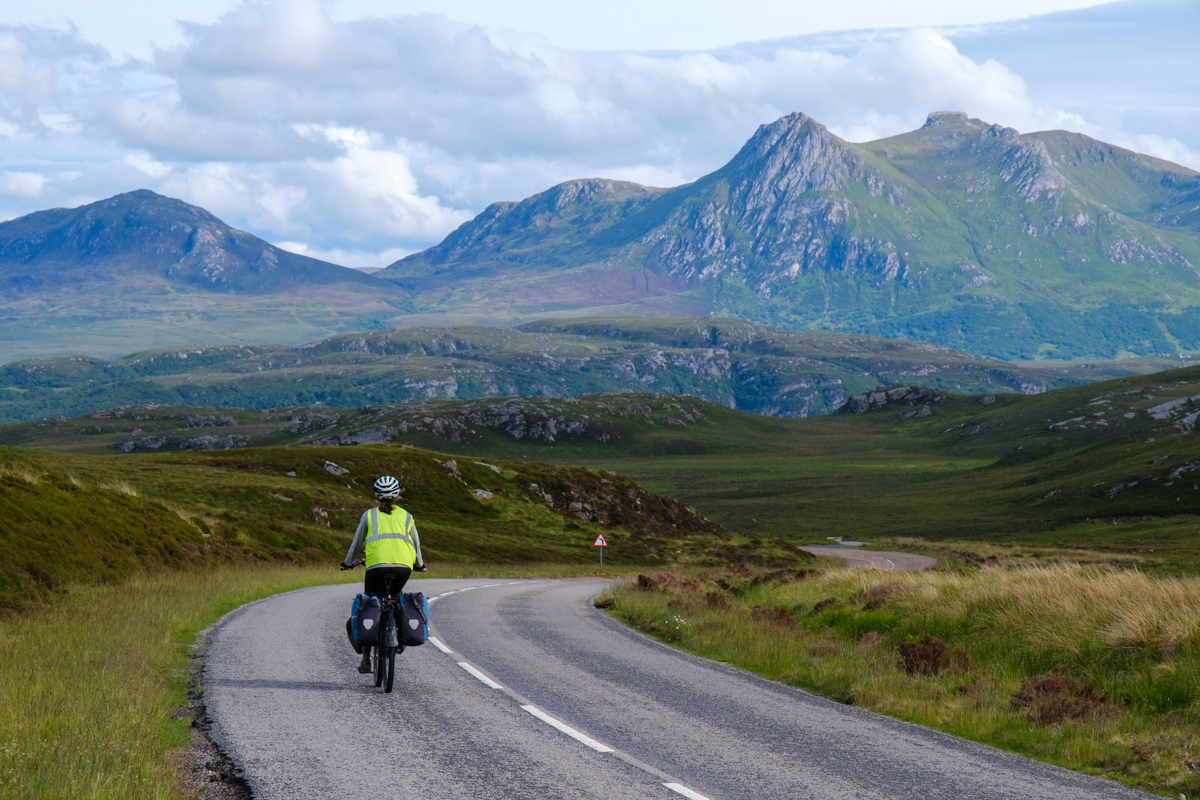
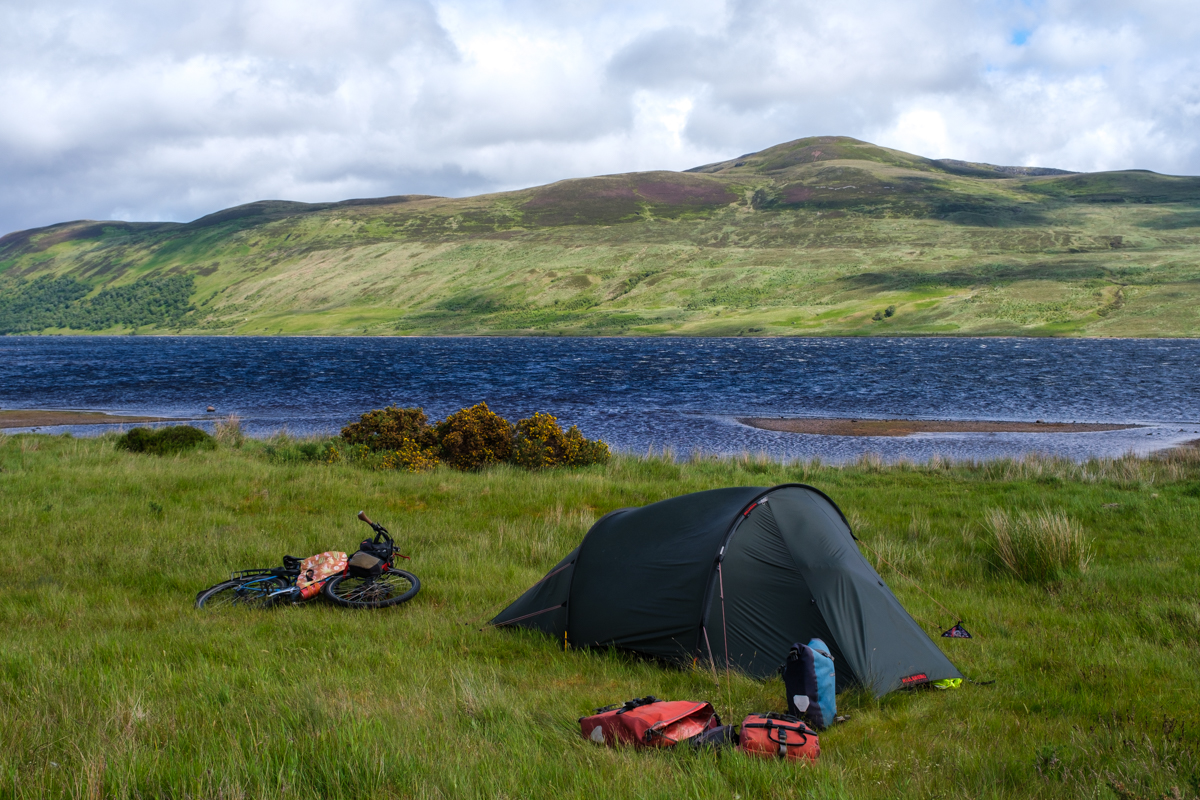
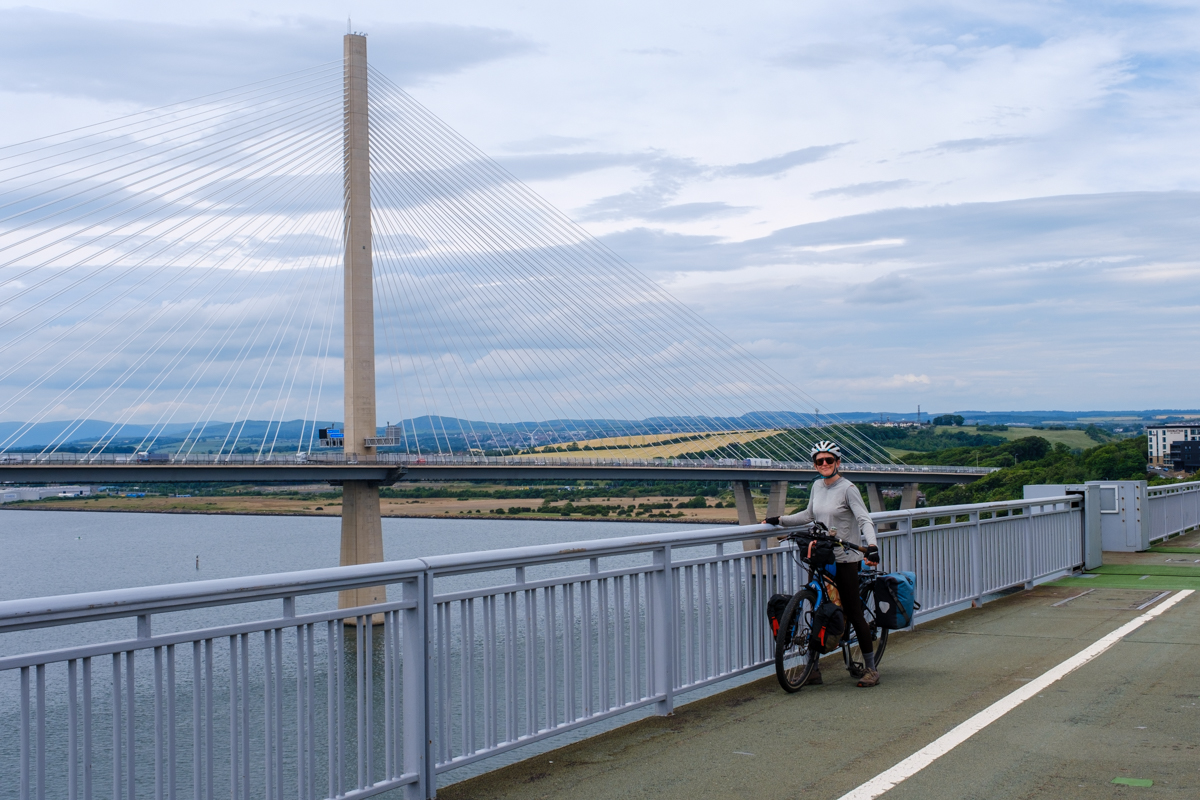
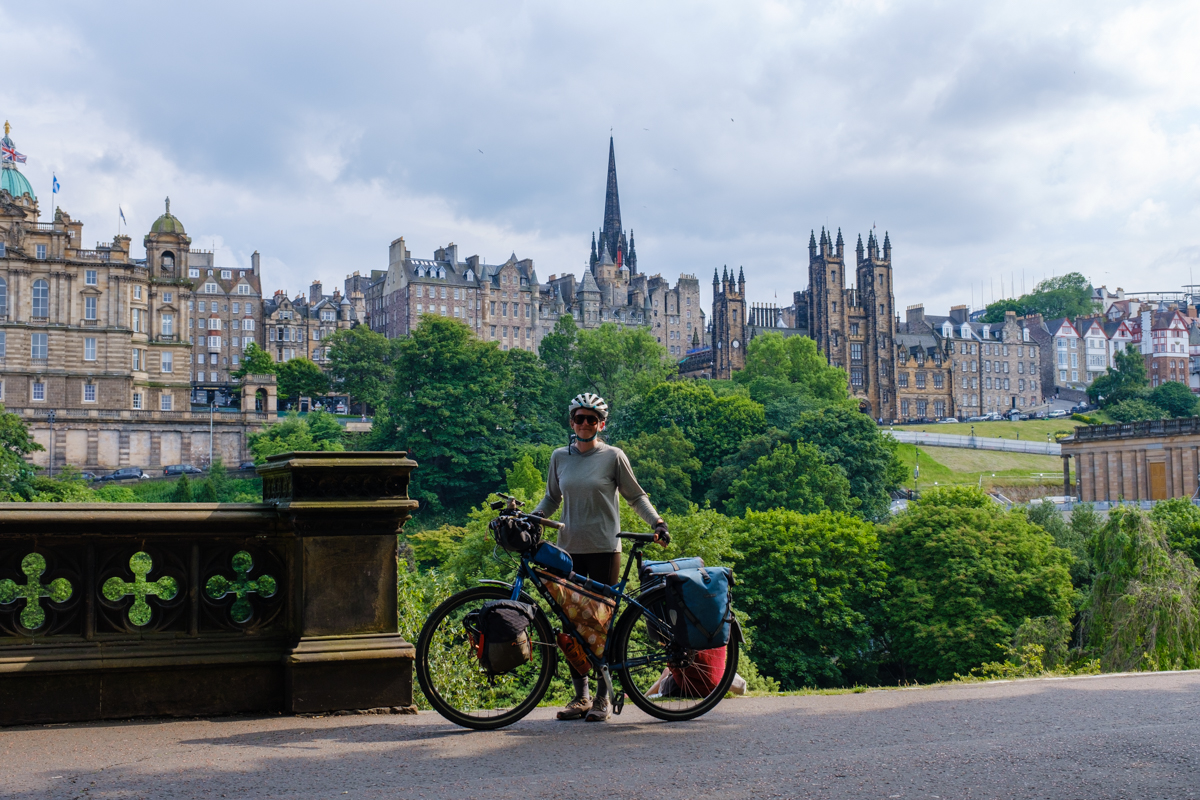
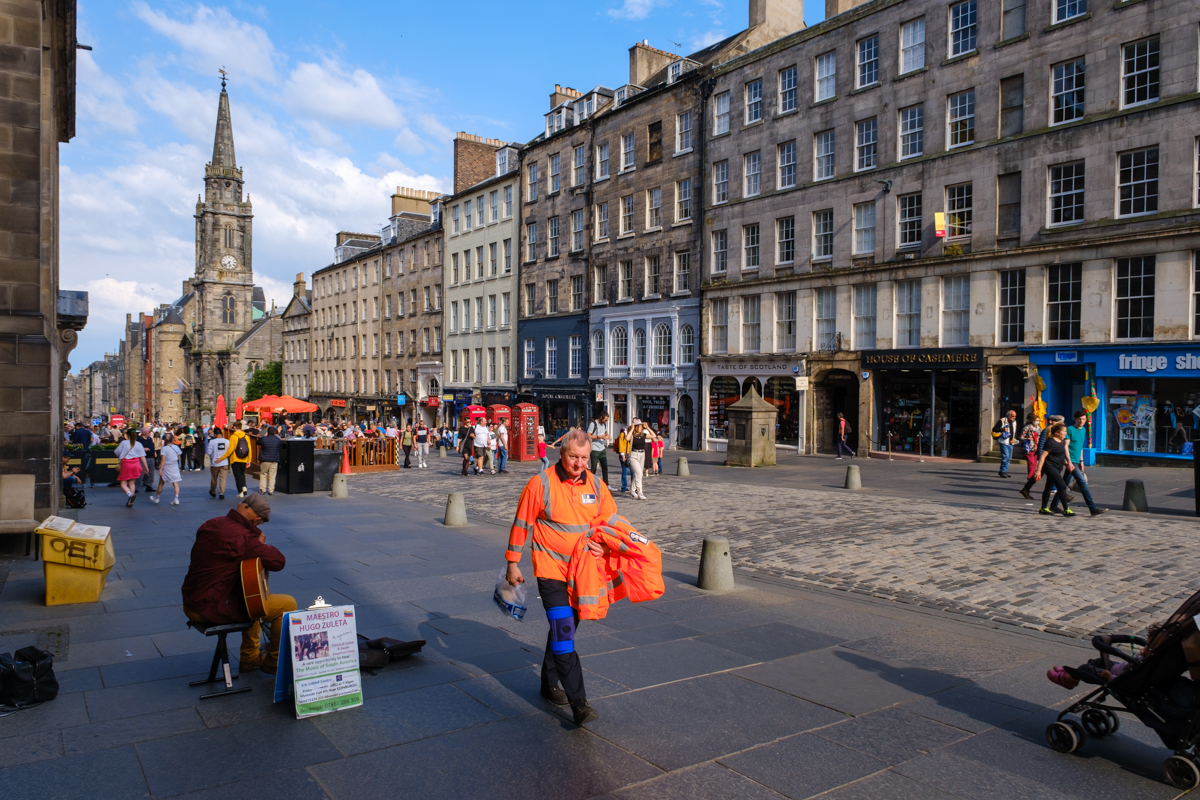
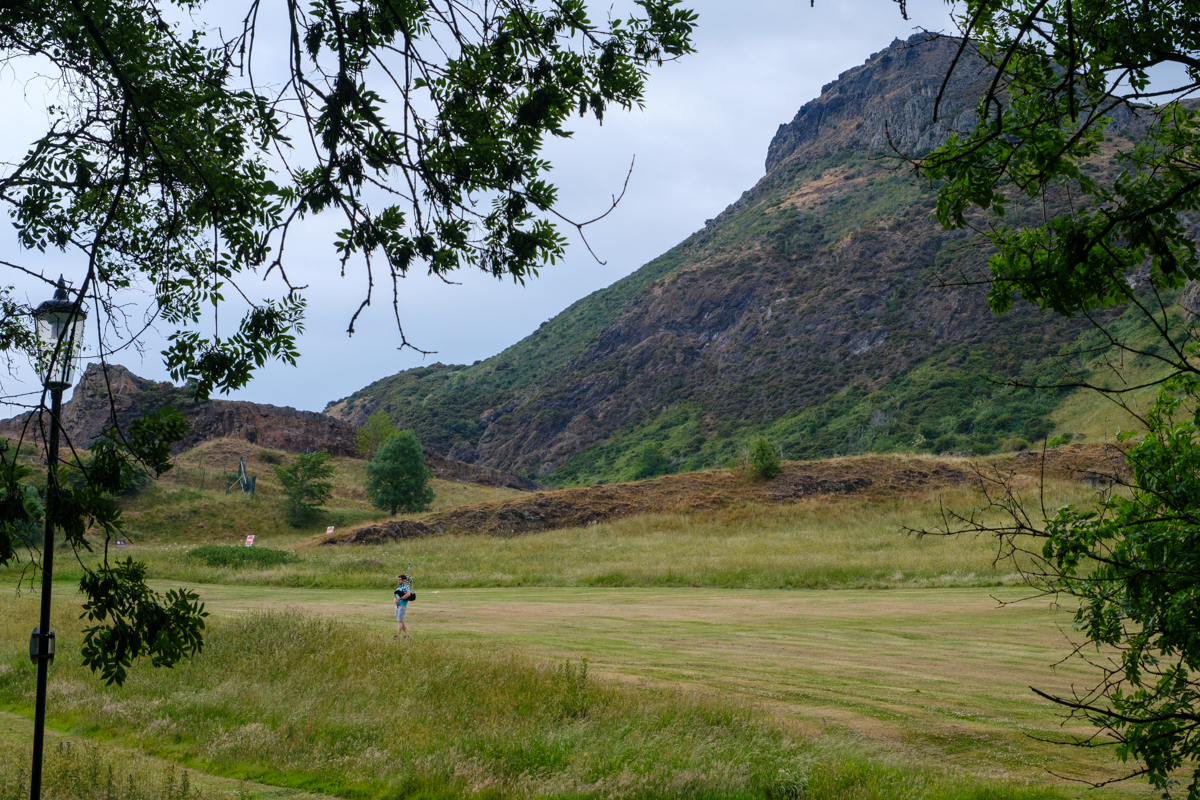
Weather
Scotland has a reputation for challenging weather, and it’s not without reason. We thought that people were being slightly dramatic when complaining about Scottish weather, but we had without a doubt the worst weather of the whole trip during our tour here.
It seems that we were particularly unlucky in this department – we were told by some locals that we were getting the remnants of a tropical storm, so the weather was even worse that usual. It rained nearly every day for almost three weeks, and honestly we were nearing the limit of what we could mentally handle. Needless to say, we could not wait to head south and find some sunshine.
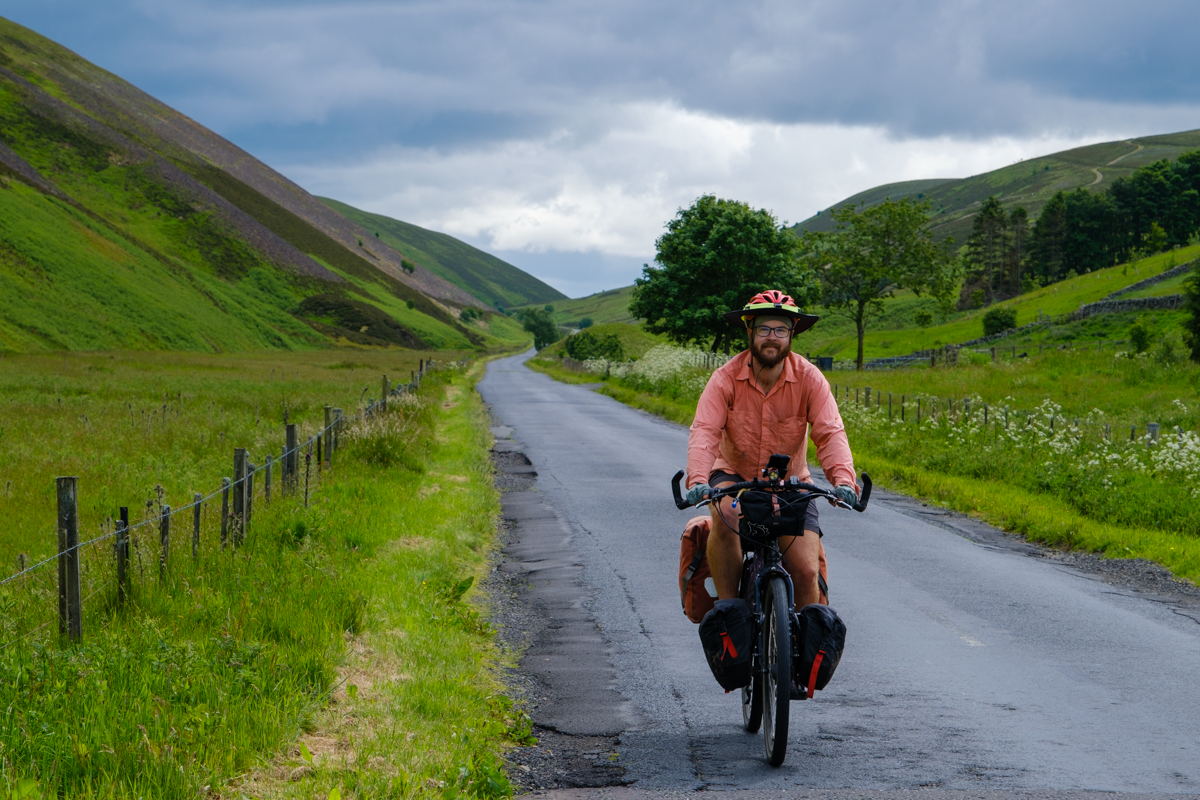
Wild Camping in Scotland
Scotland is one of the few places in Europe where wild camping is legal, though there are some rules to keep in mind in addition to following Leave No Trace principles. The Scottish Access Code outlines what is allowed and some best practices to follow. In general, it’s best to avoid enclosed fields and take extra care if you’re traveling in an area with high visitation that could be subject to overuse. Certain areas, such as Loch Lomond National Park, have additional regulations on where wild camping is allowed. We try to be out of sight of houses and away from popular trails and day use areas when possible.
